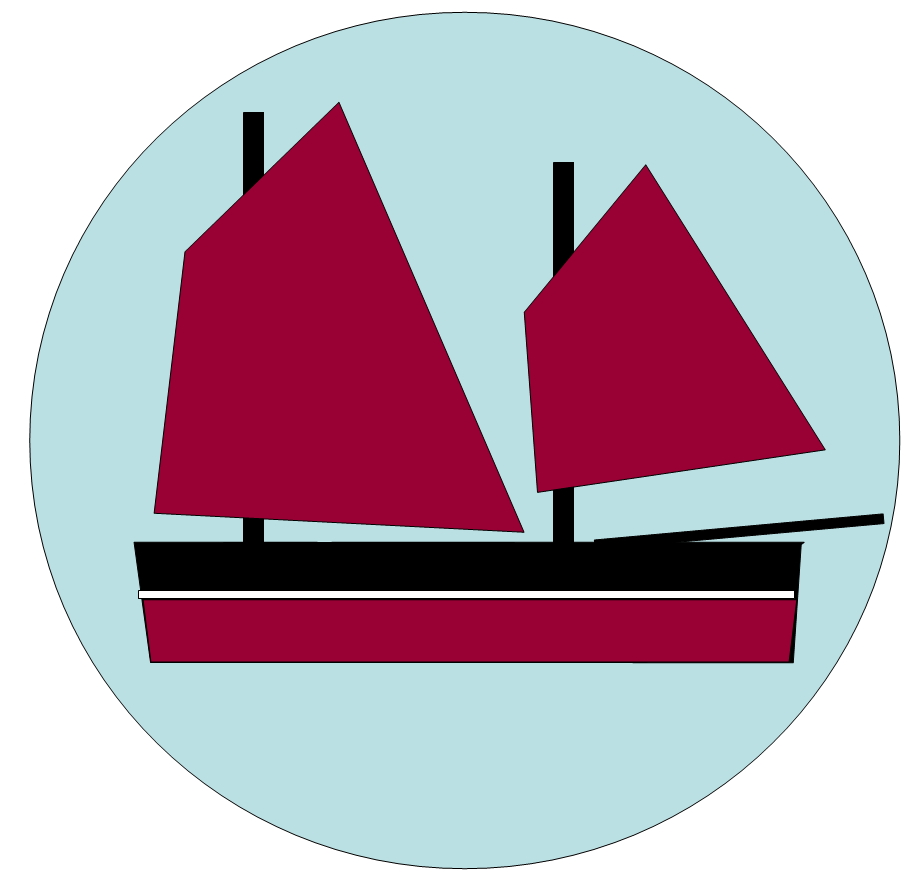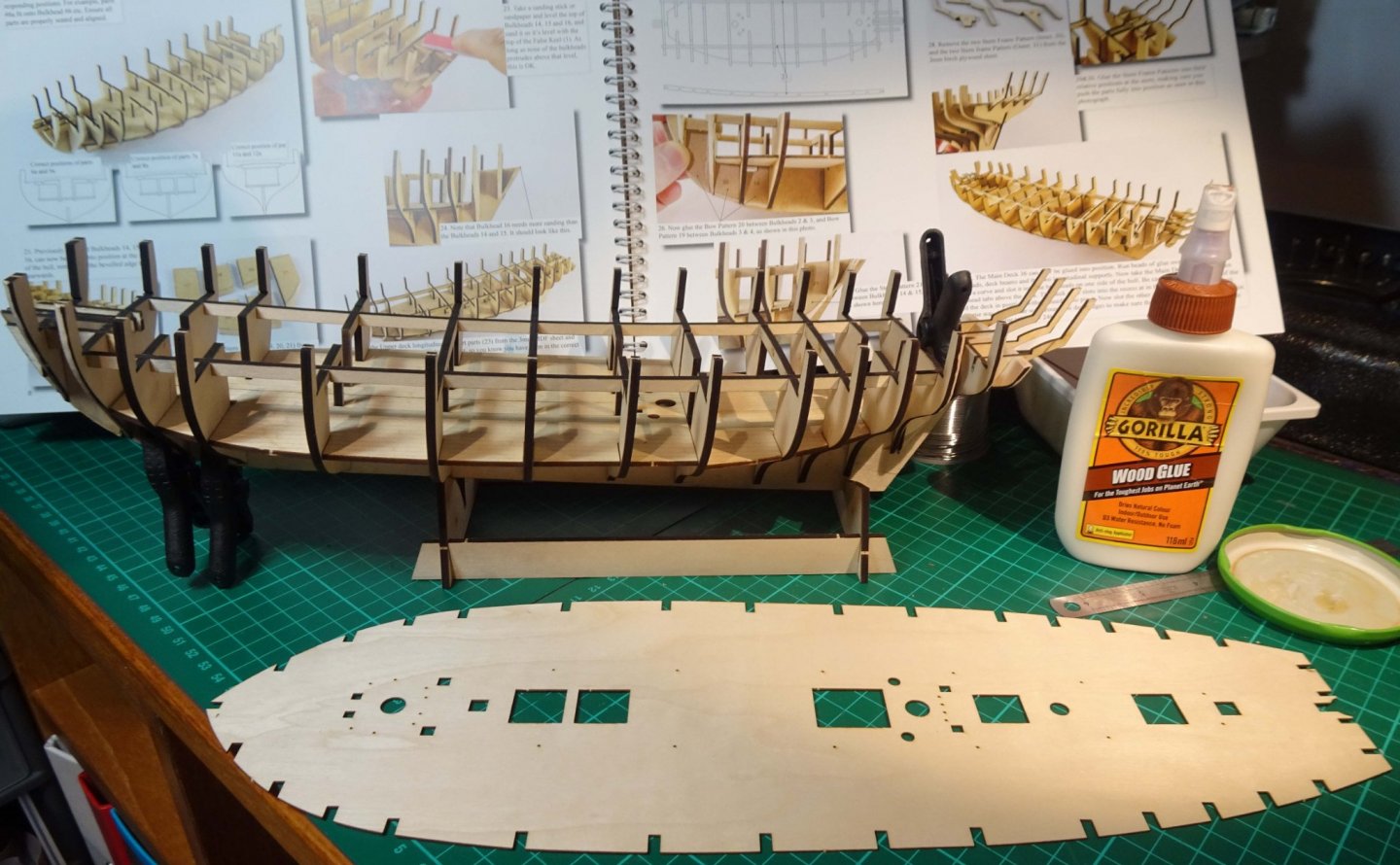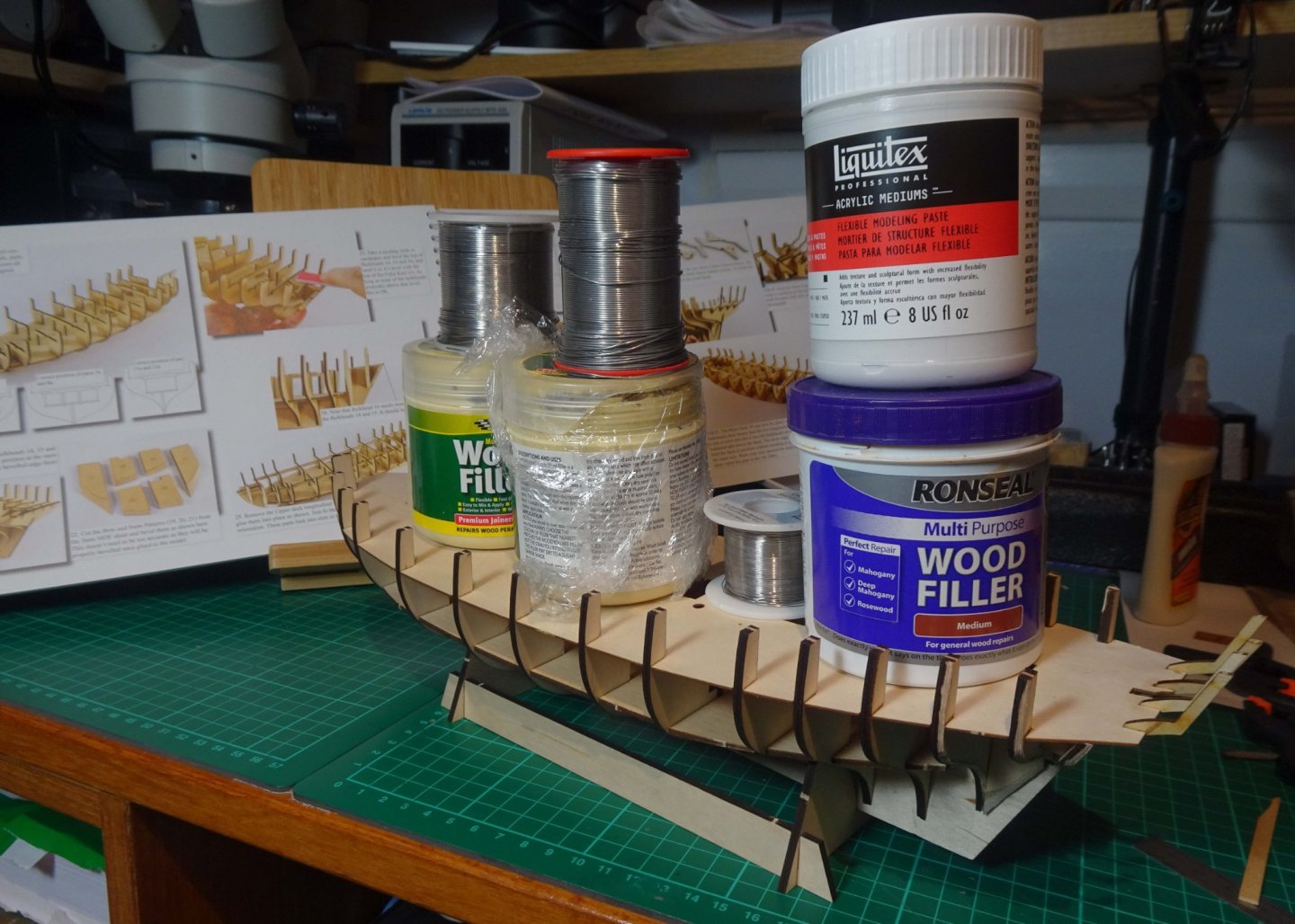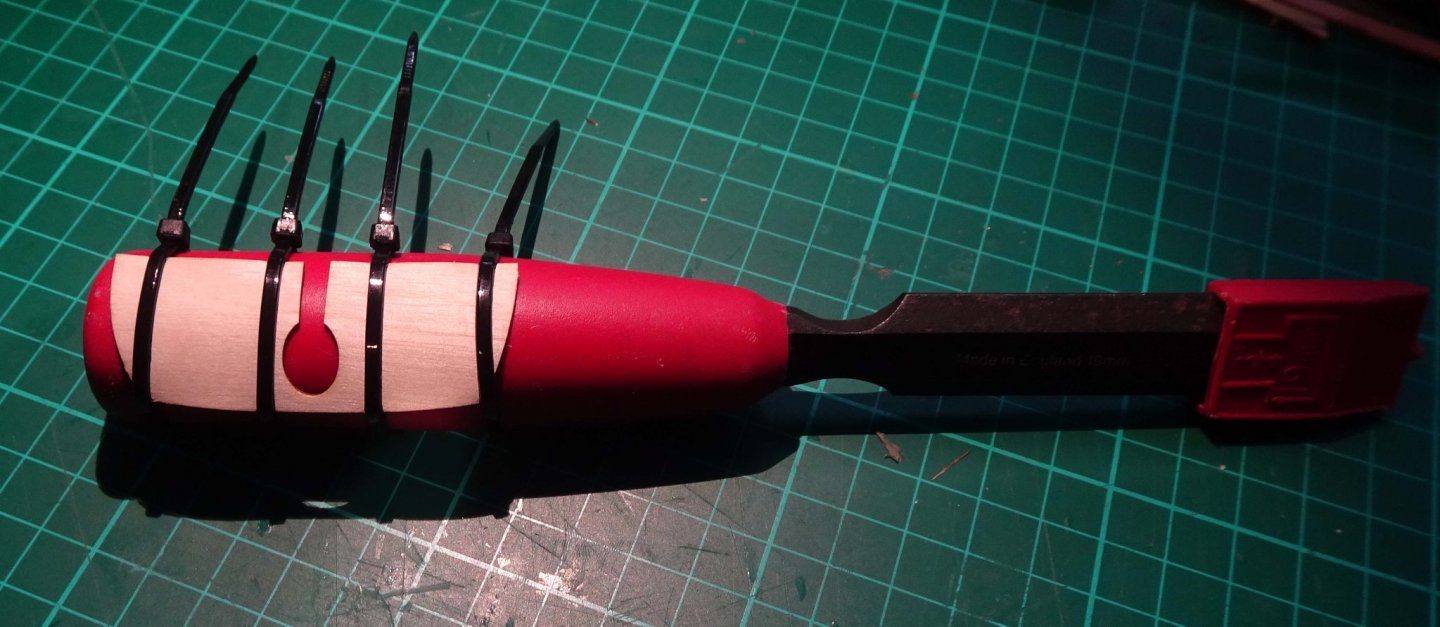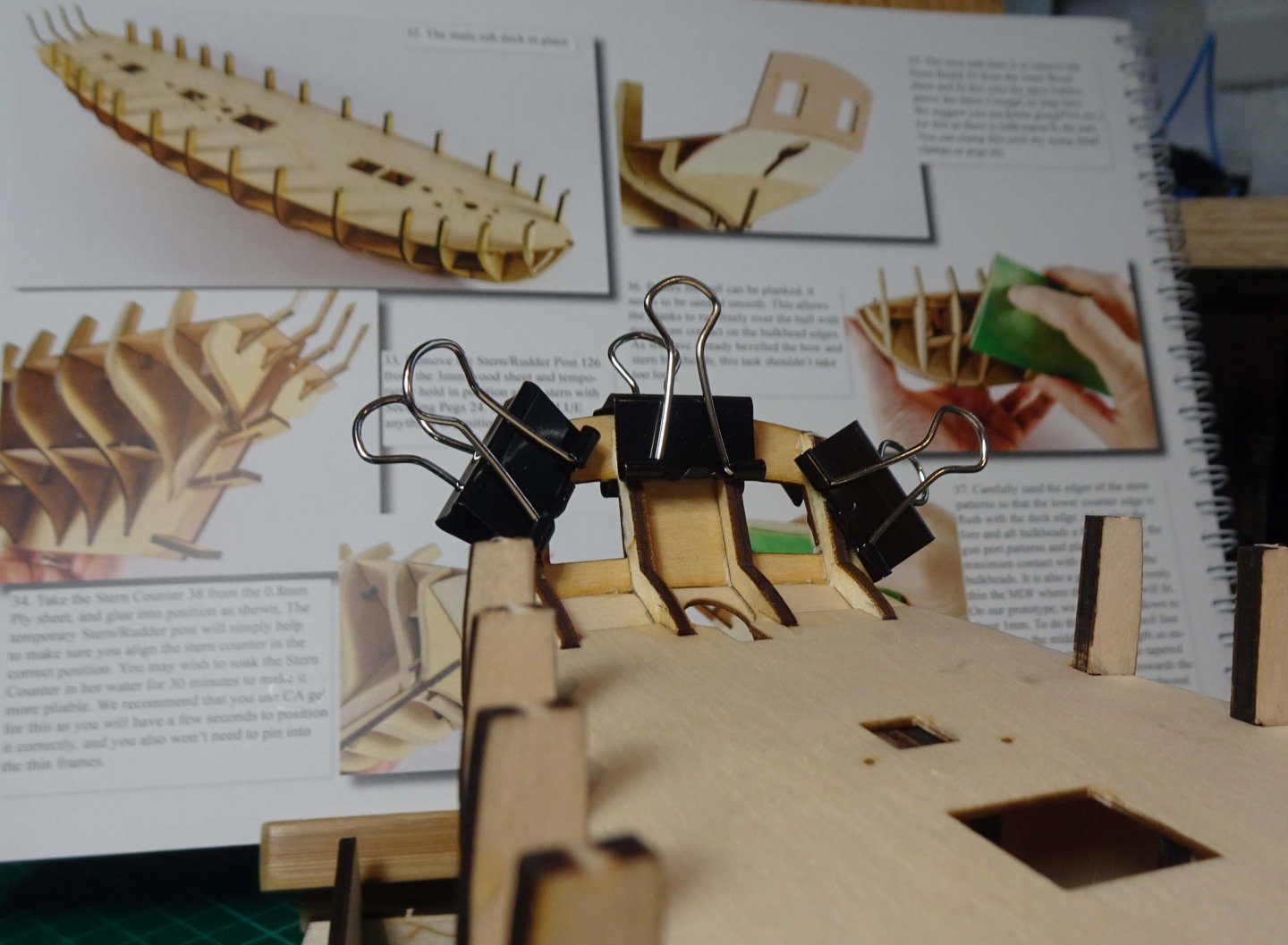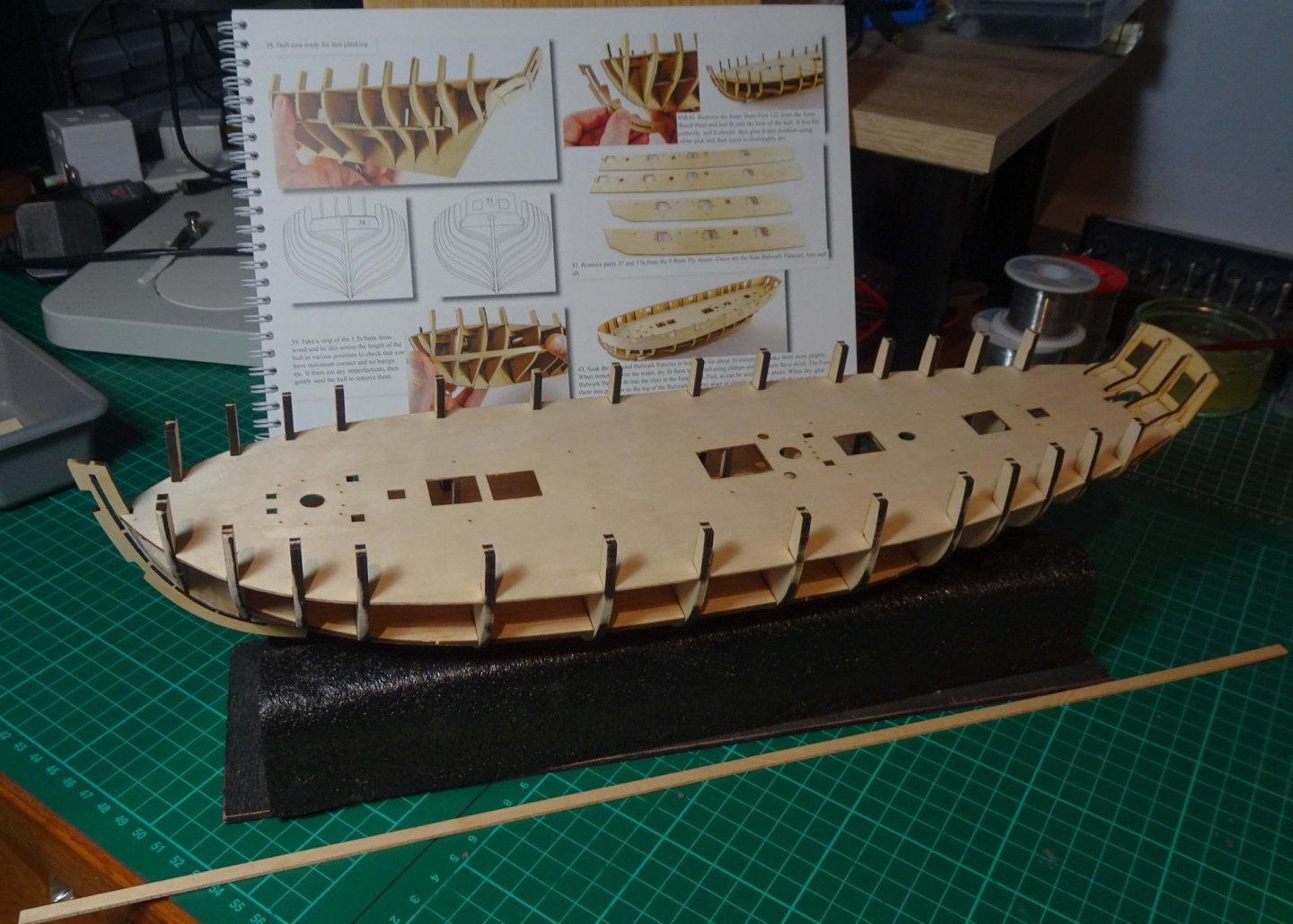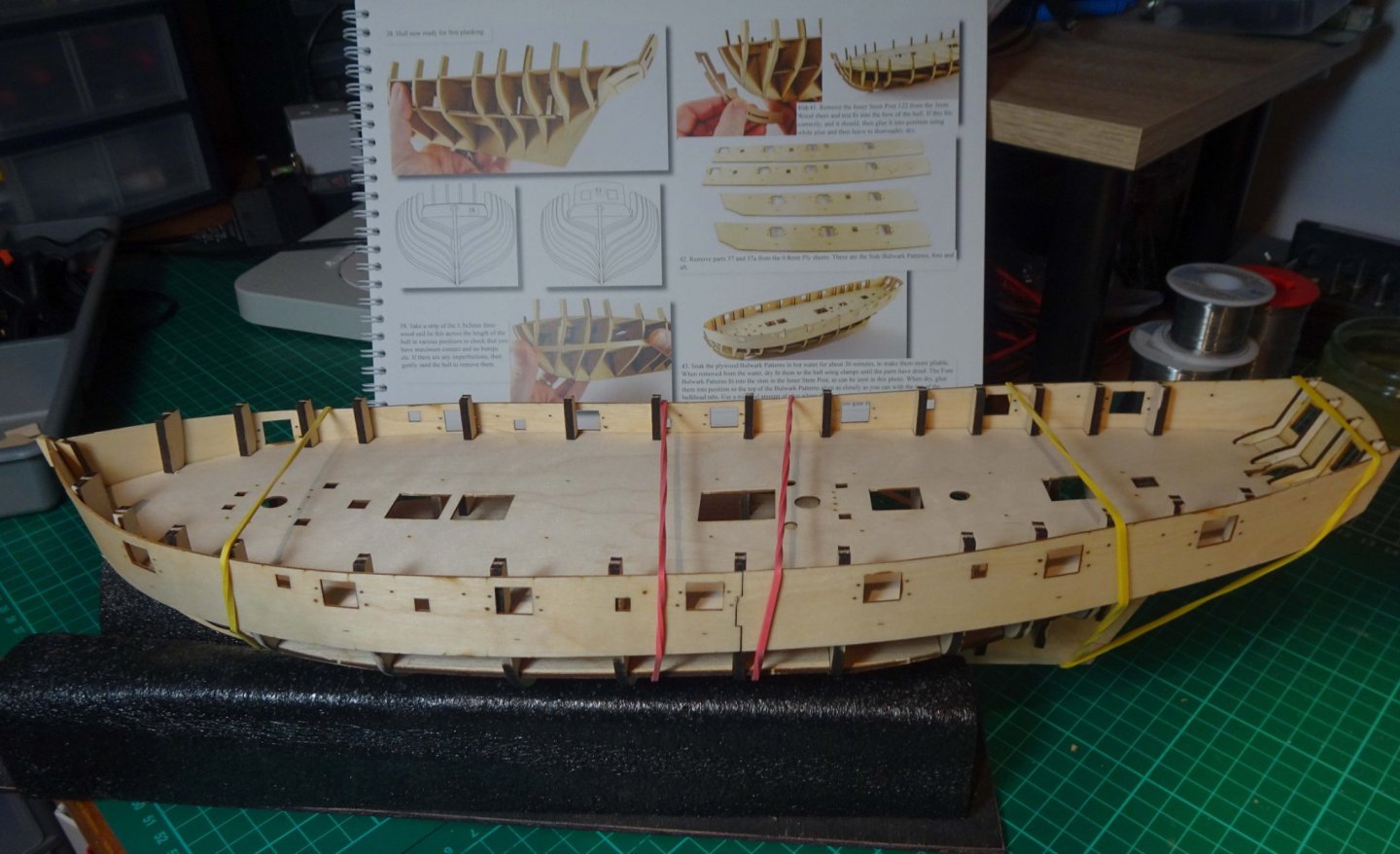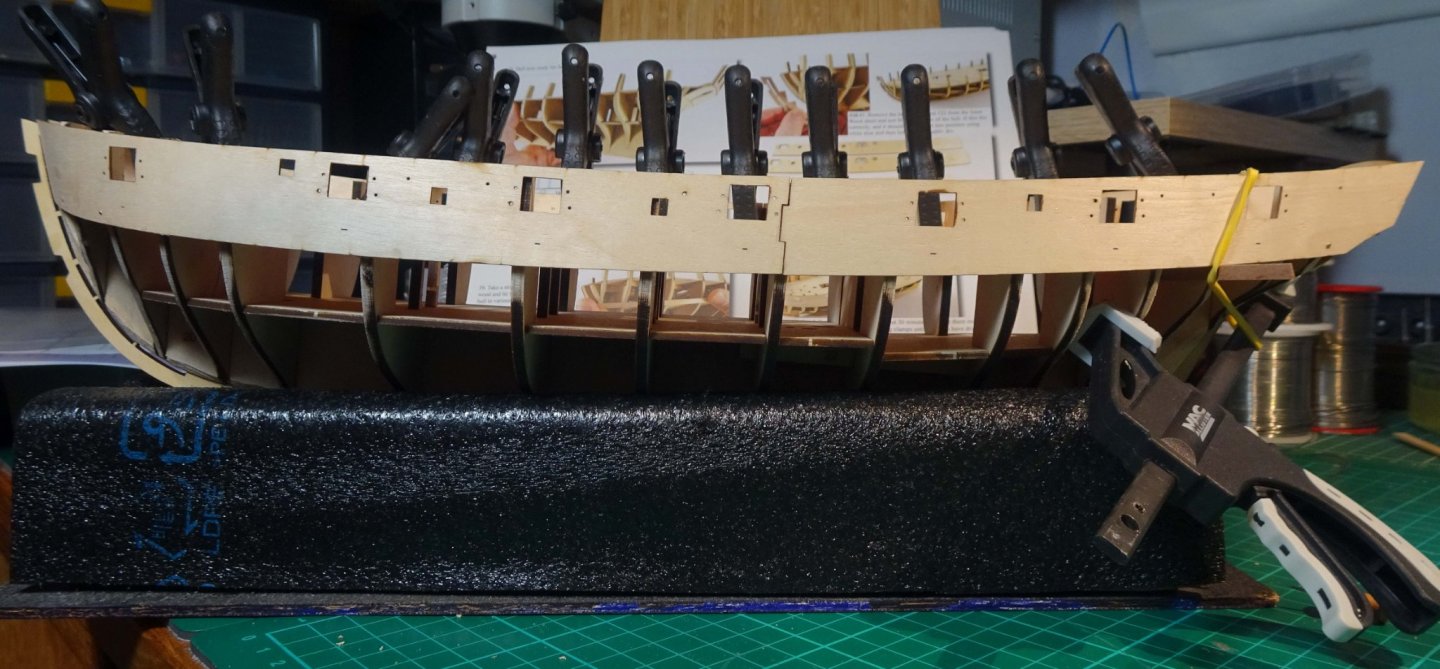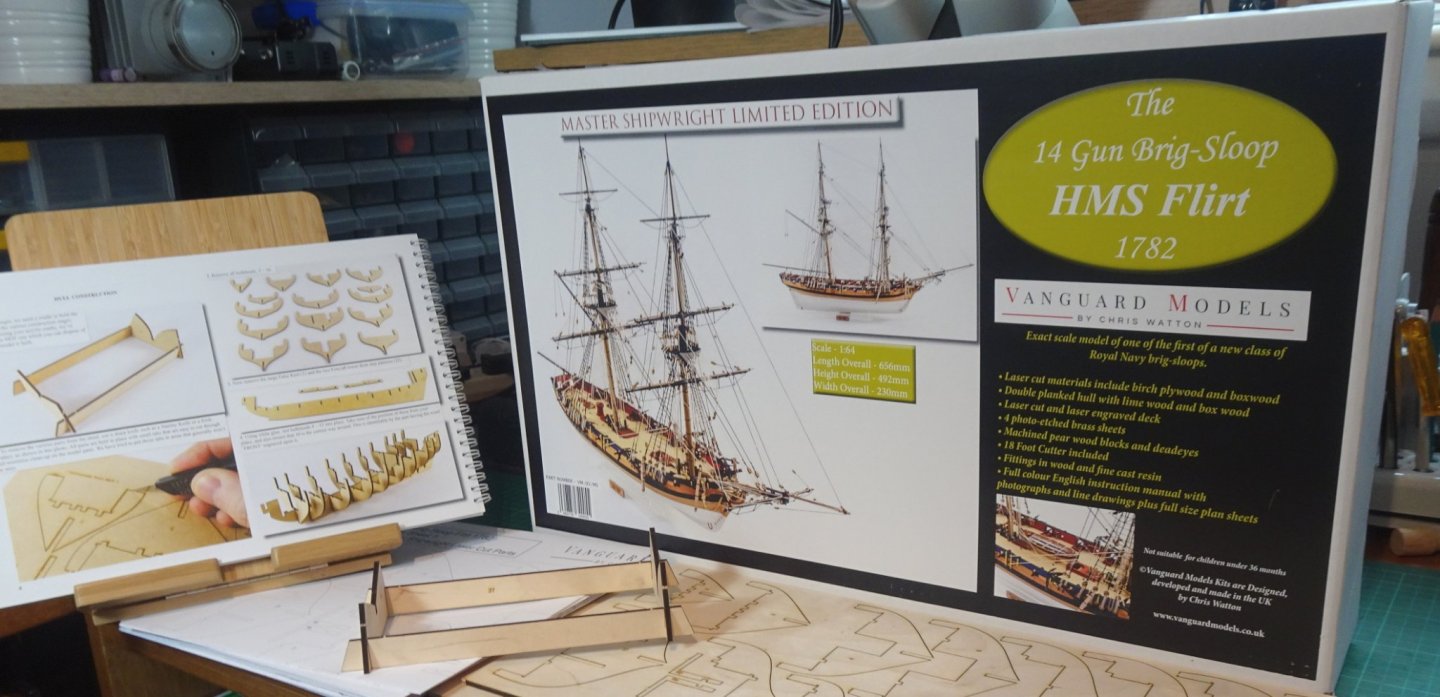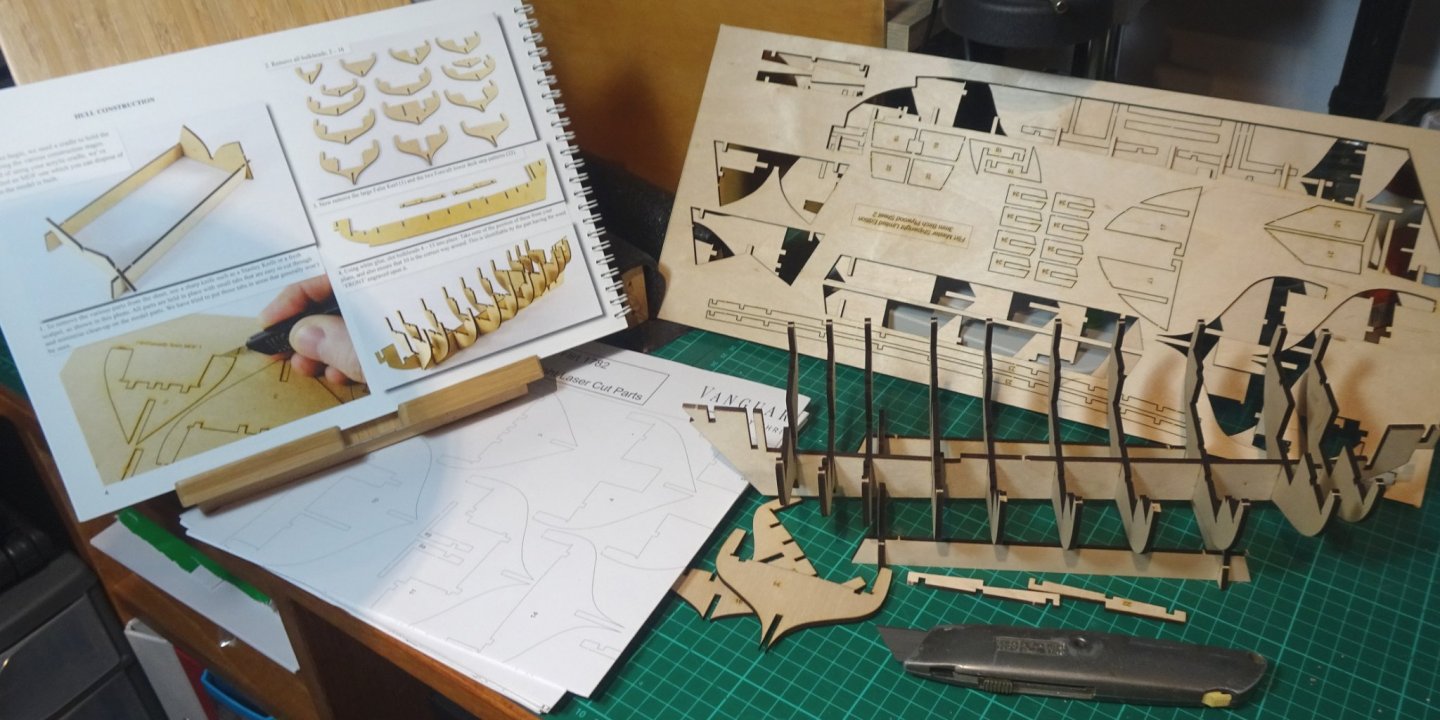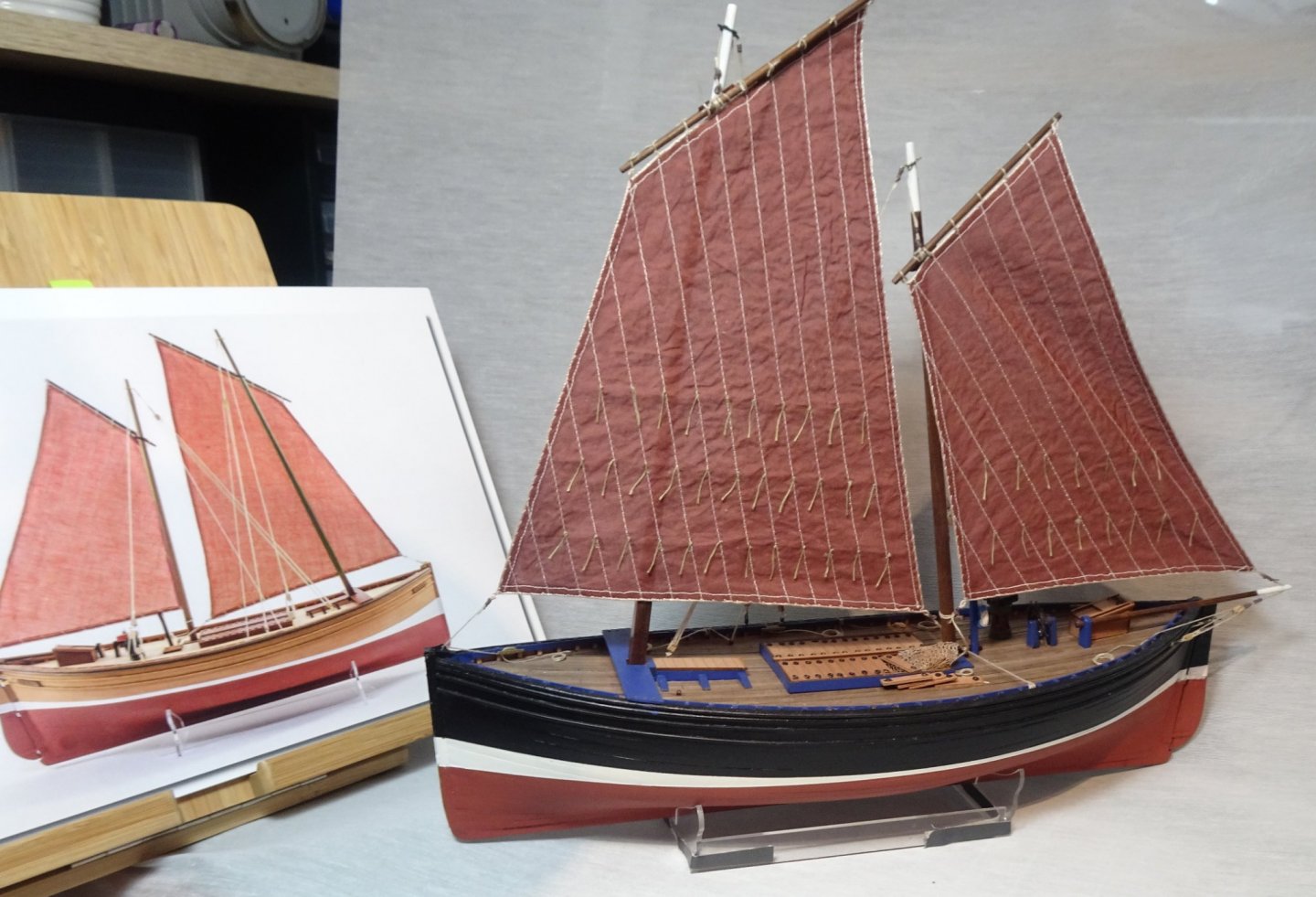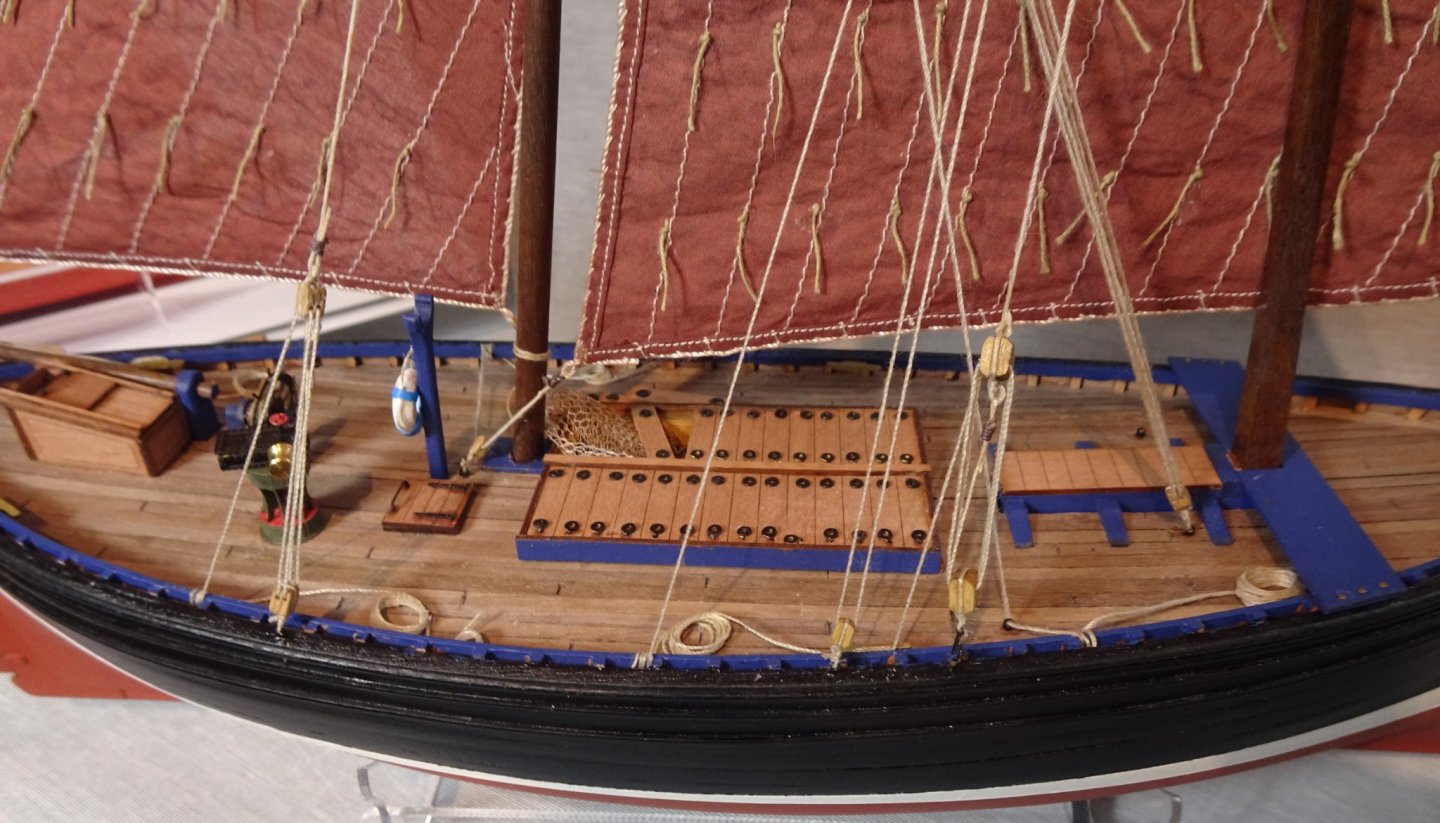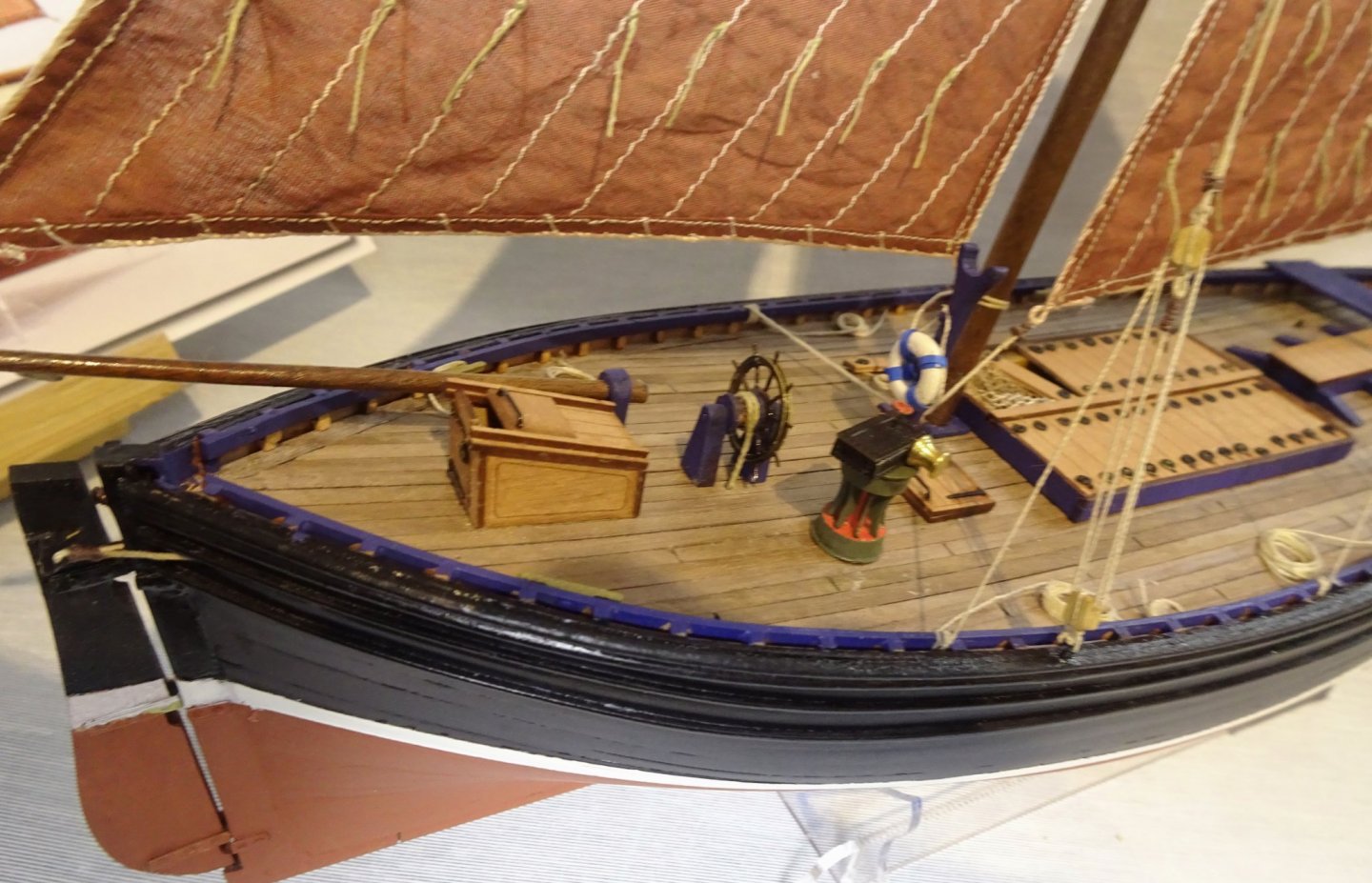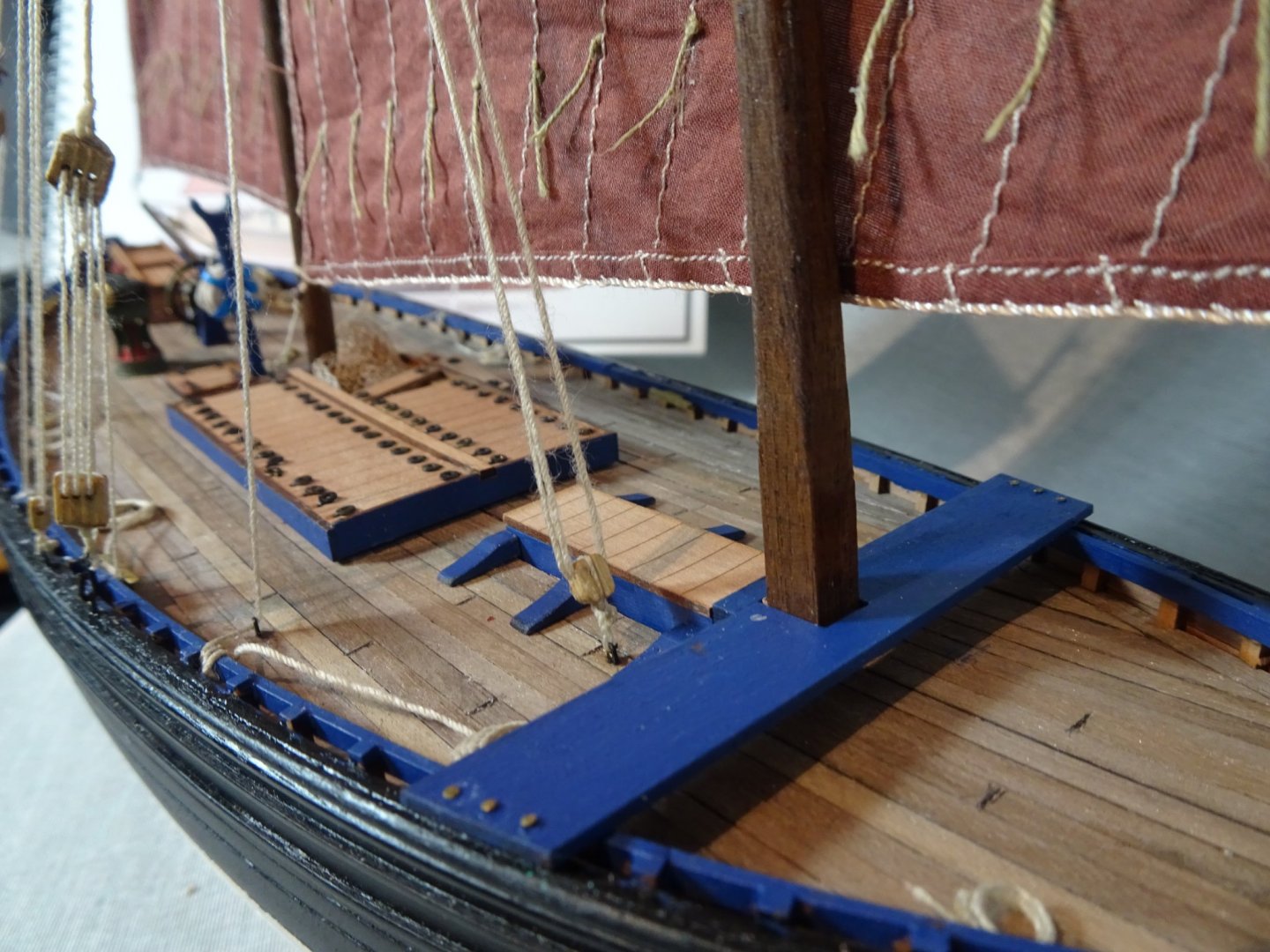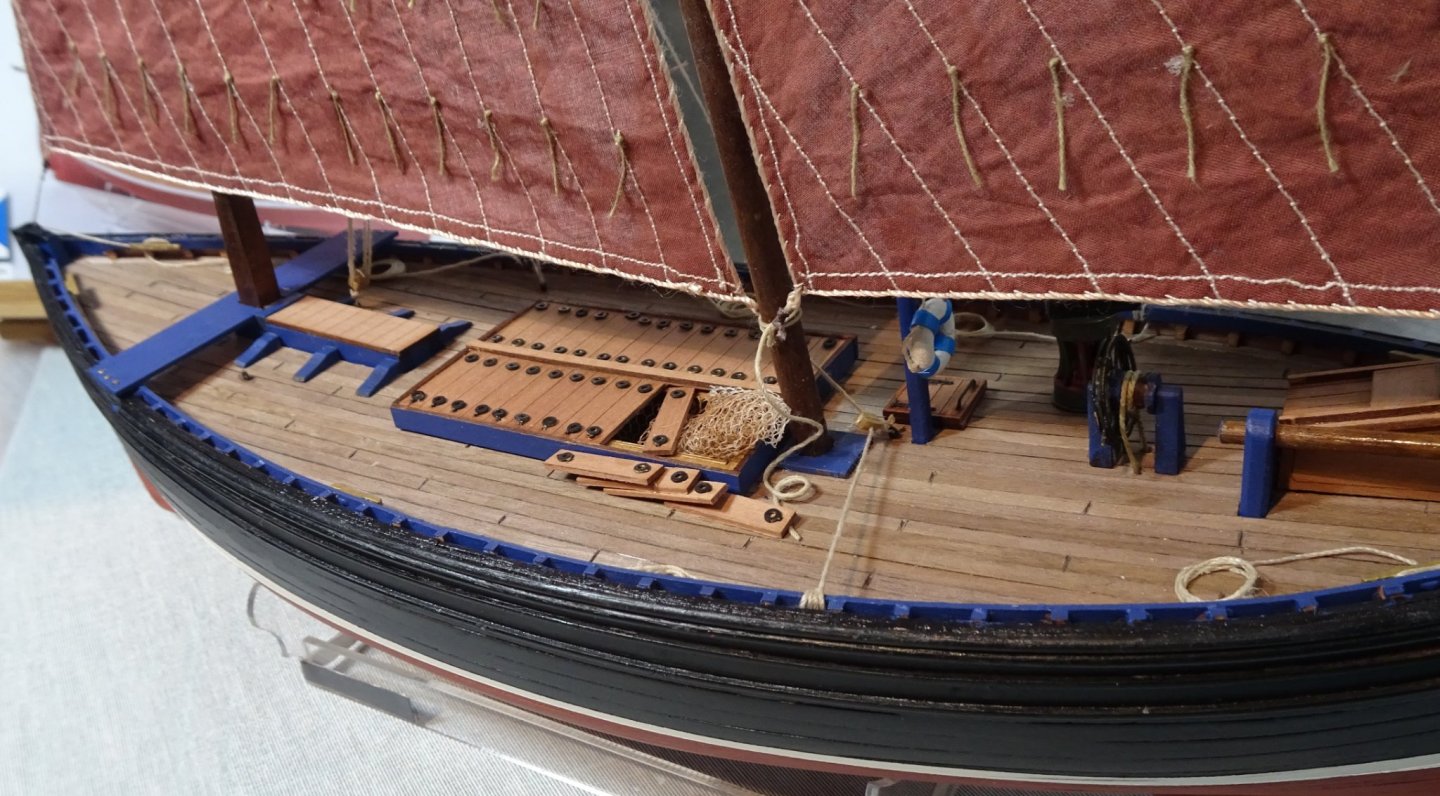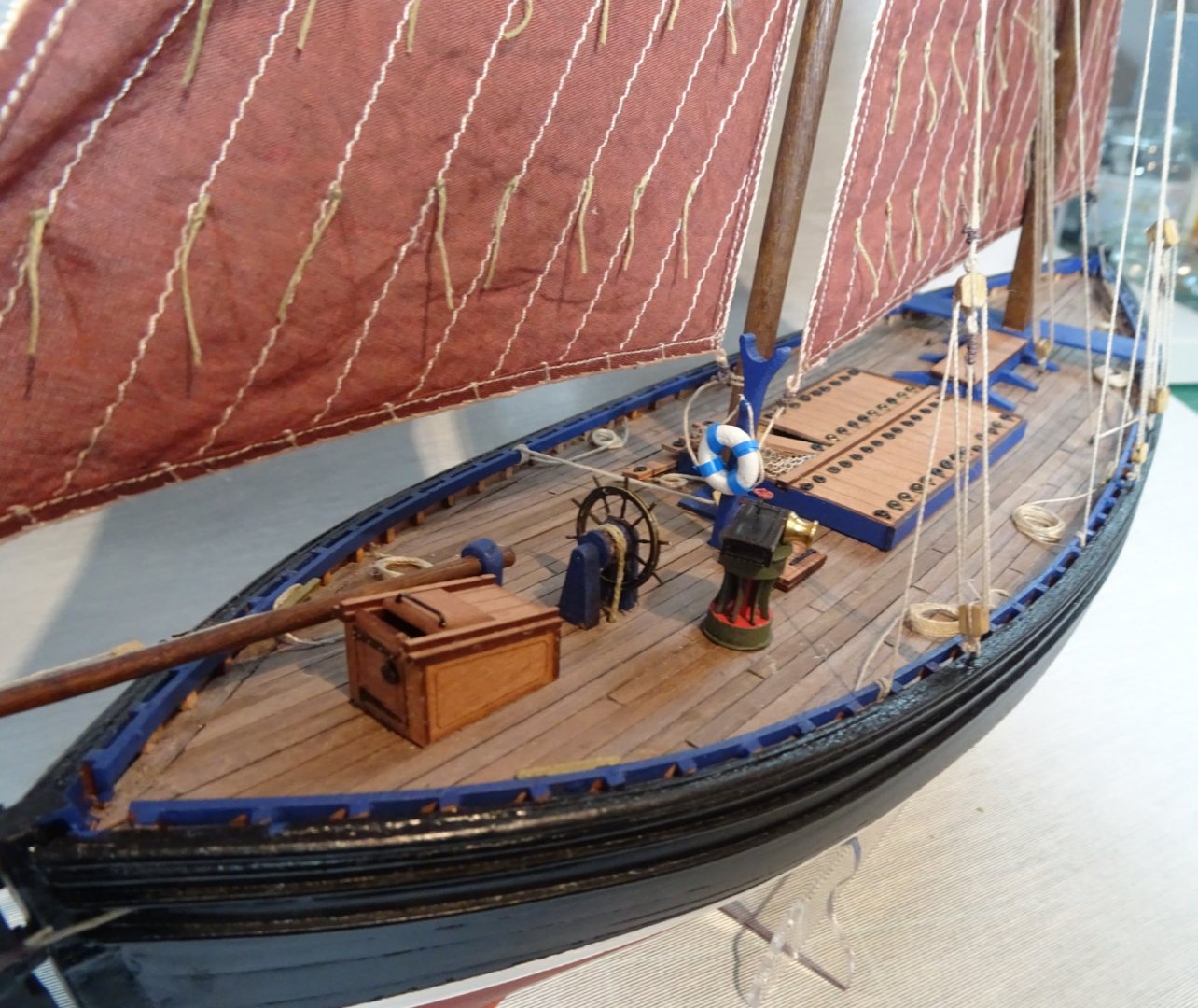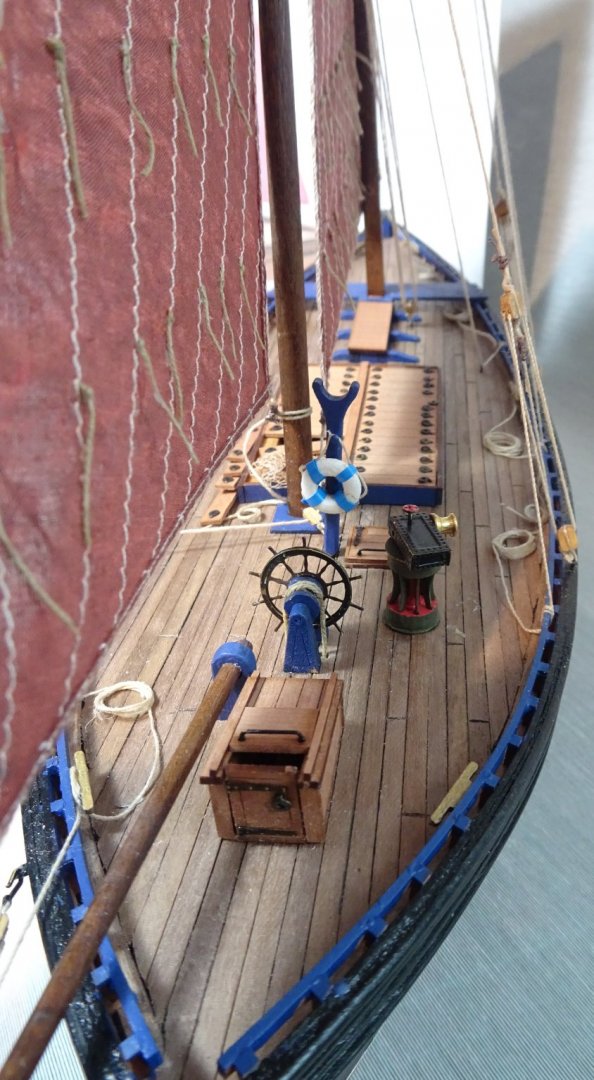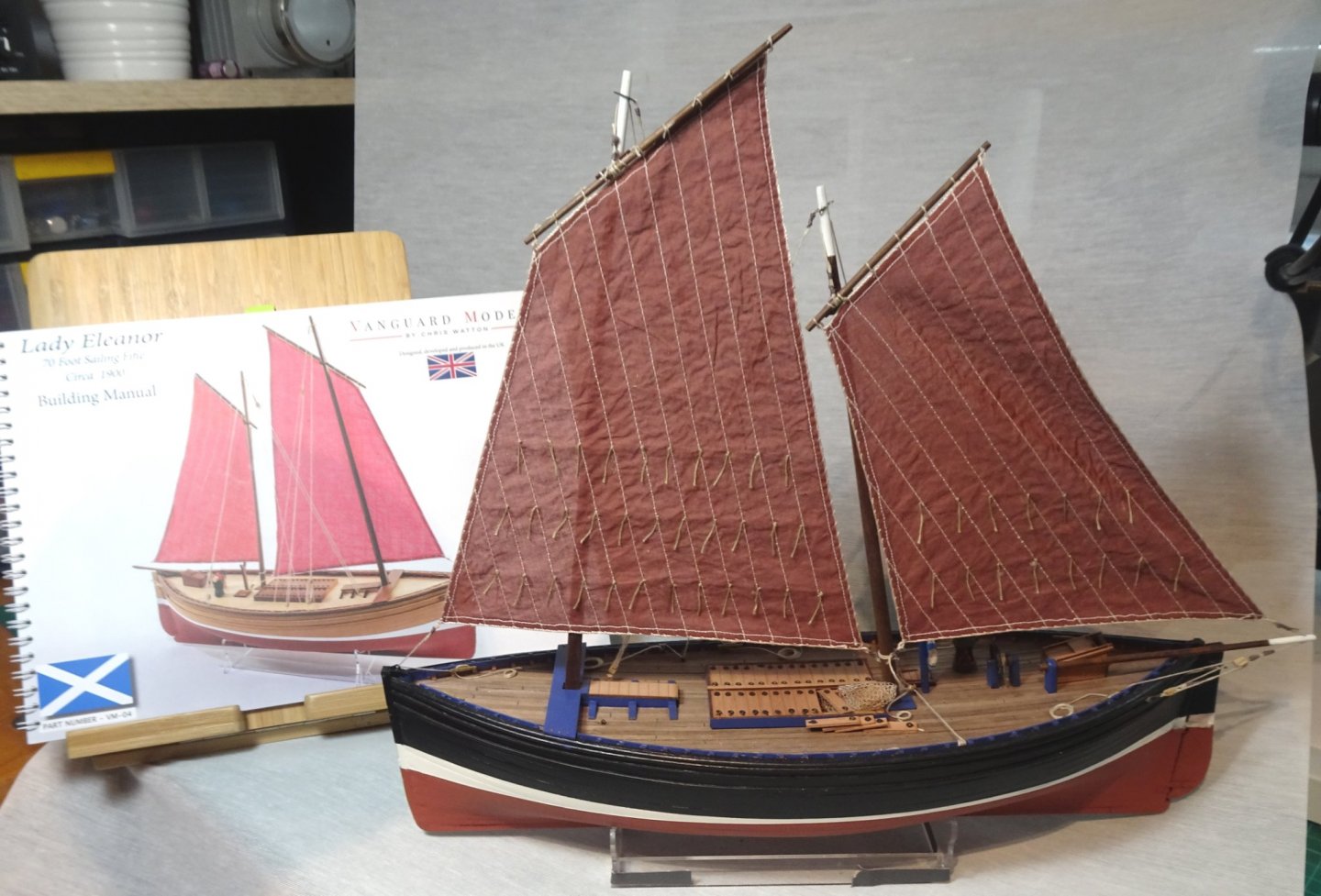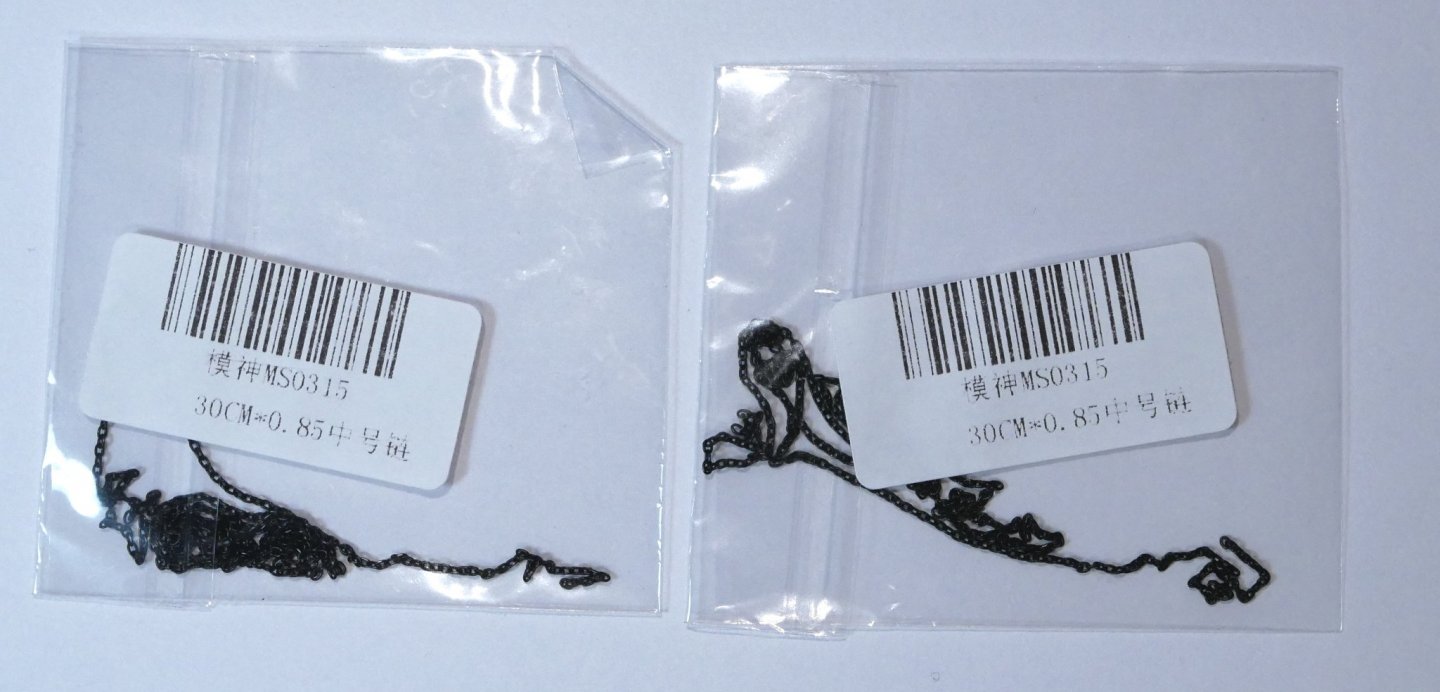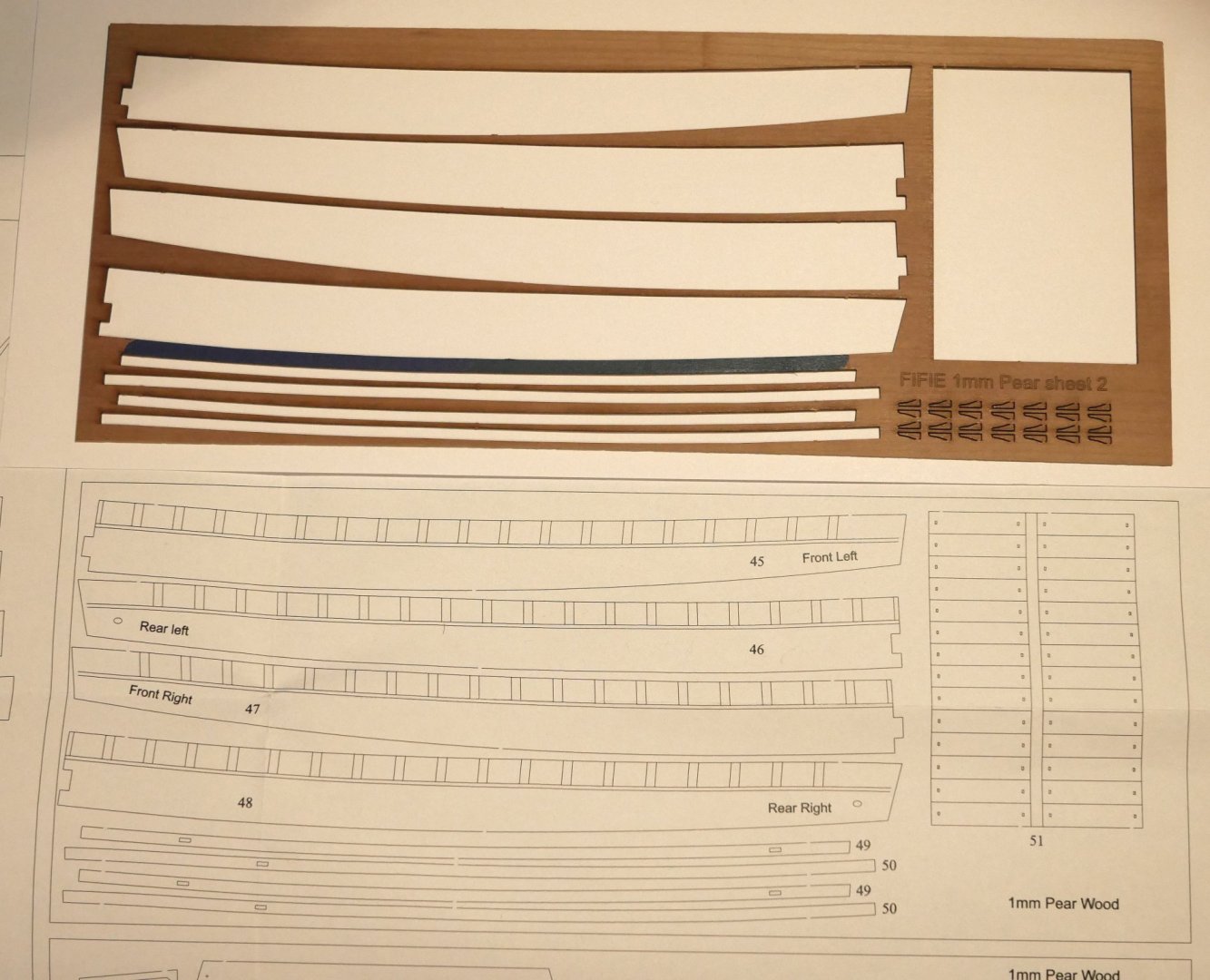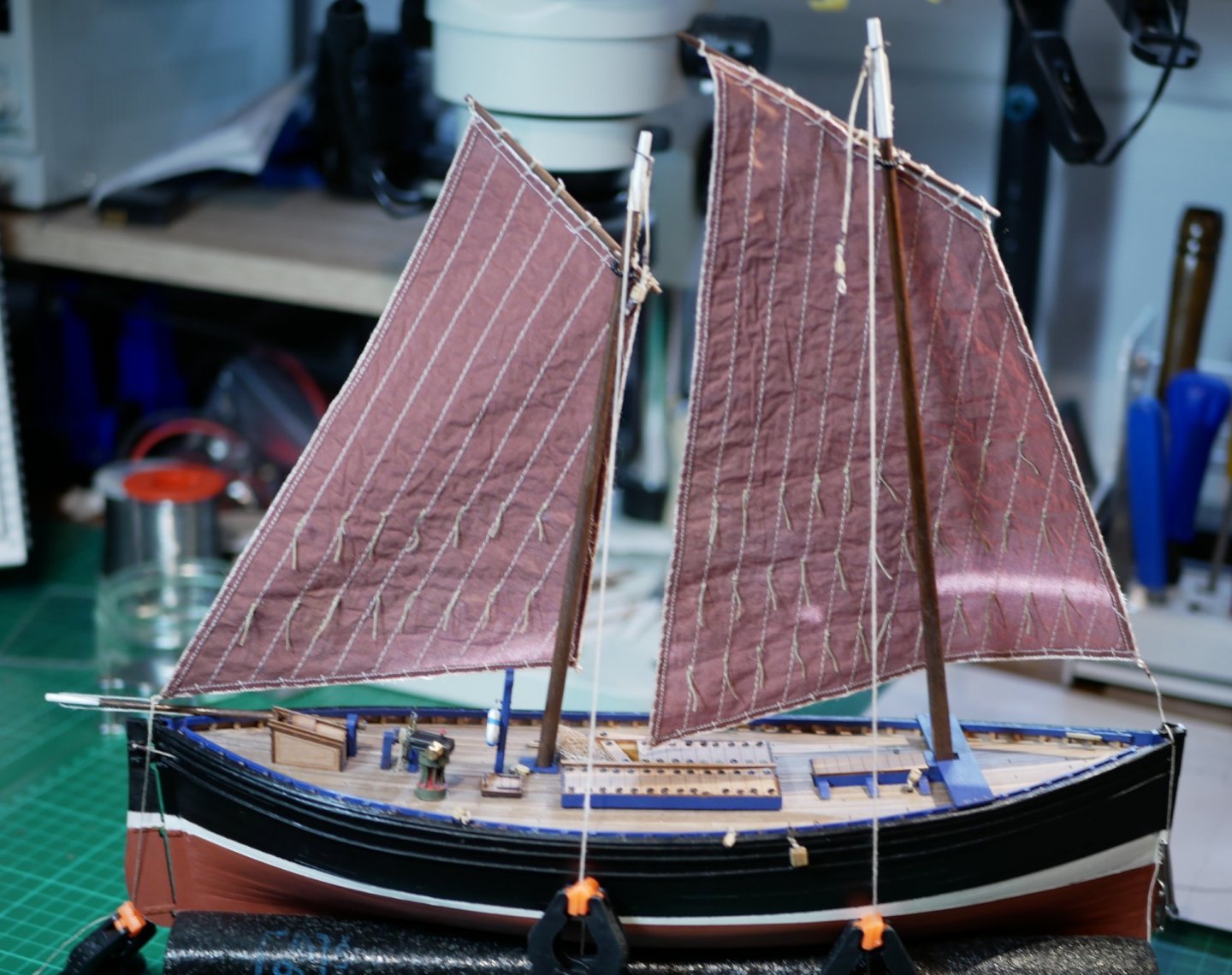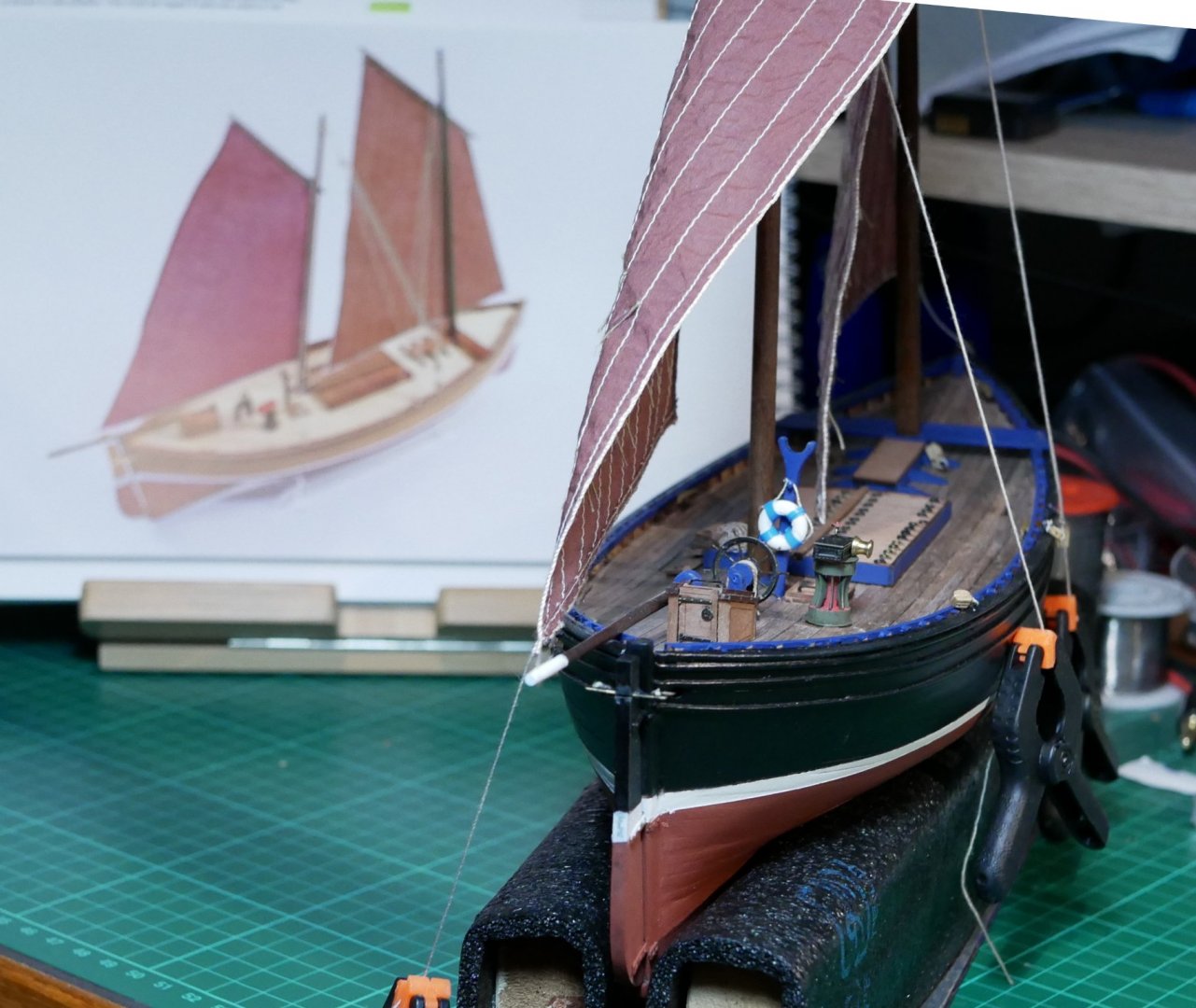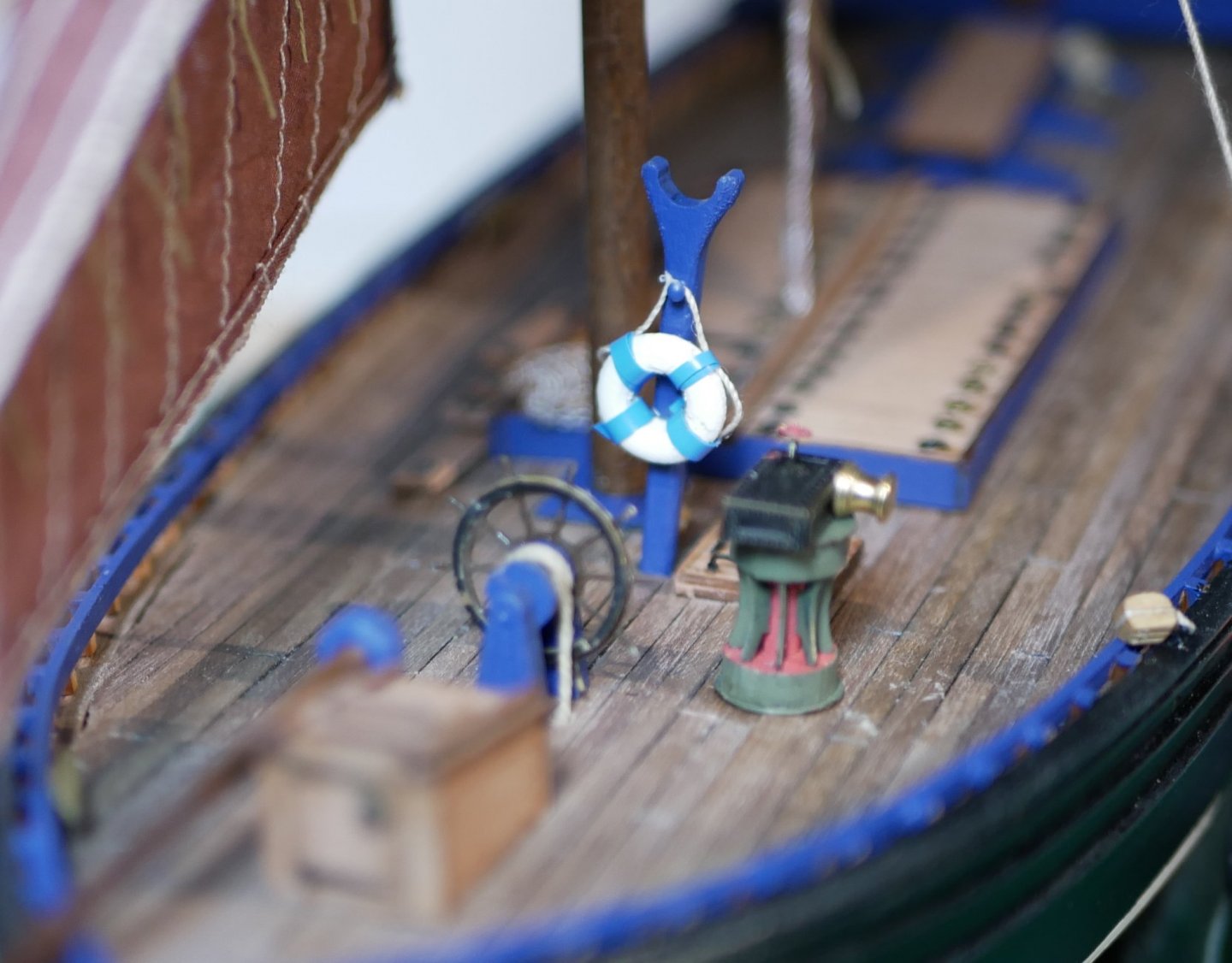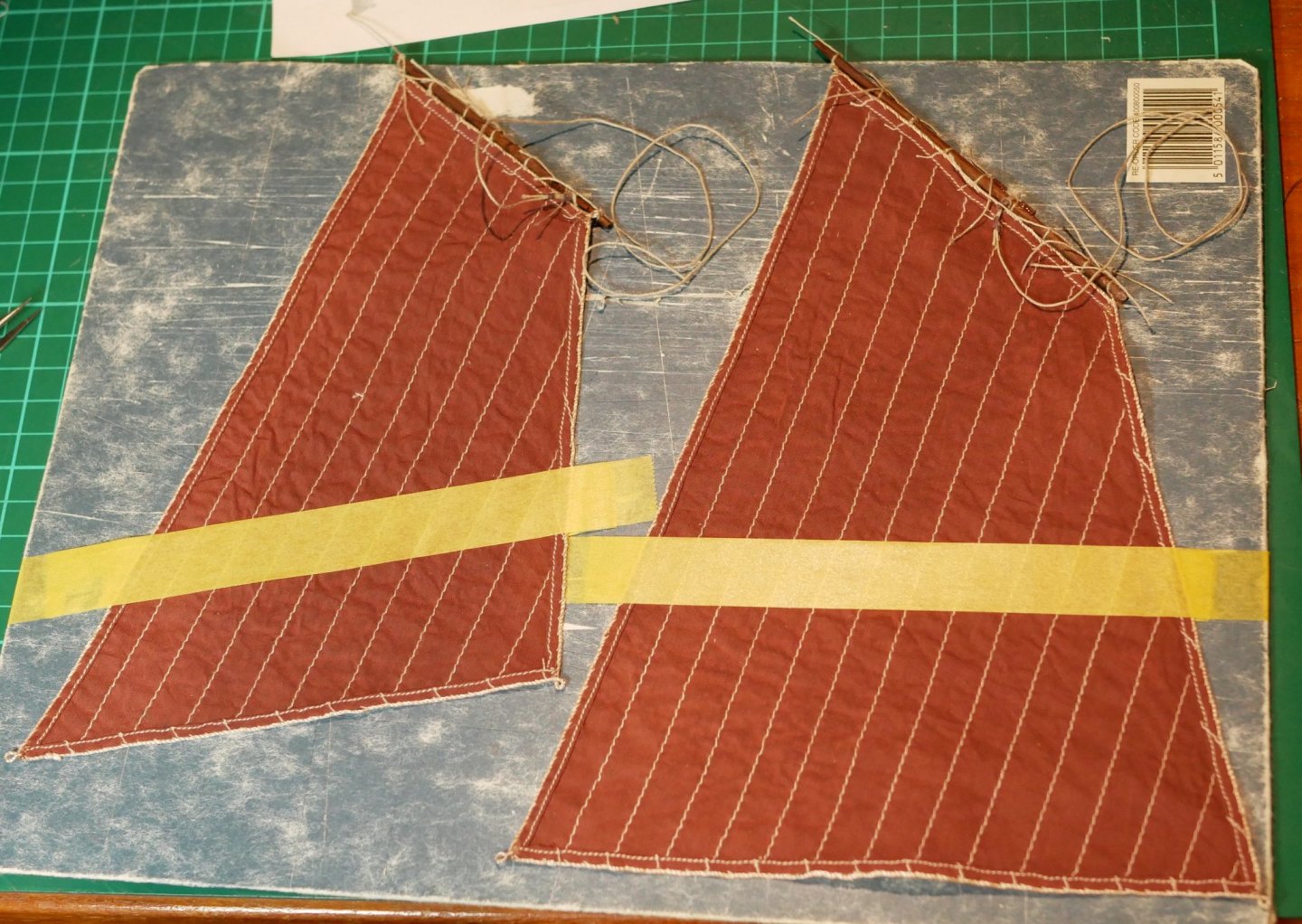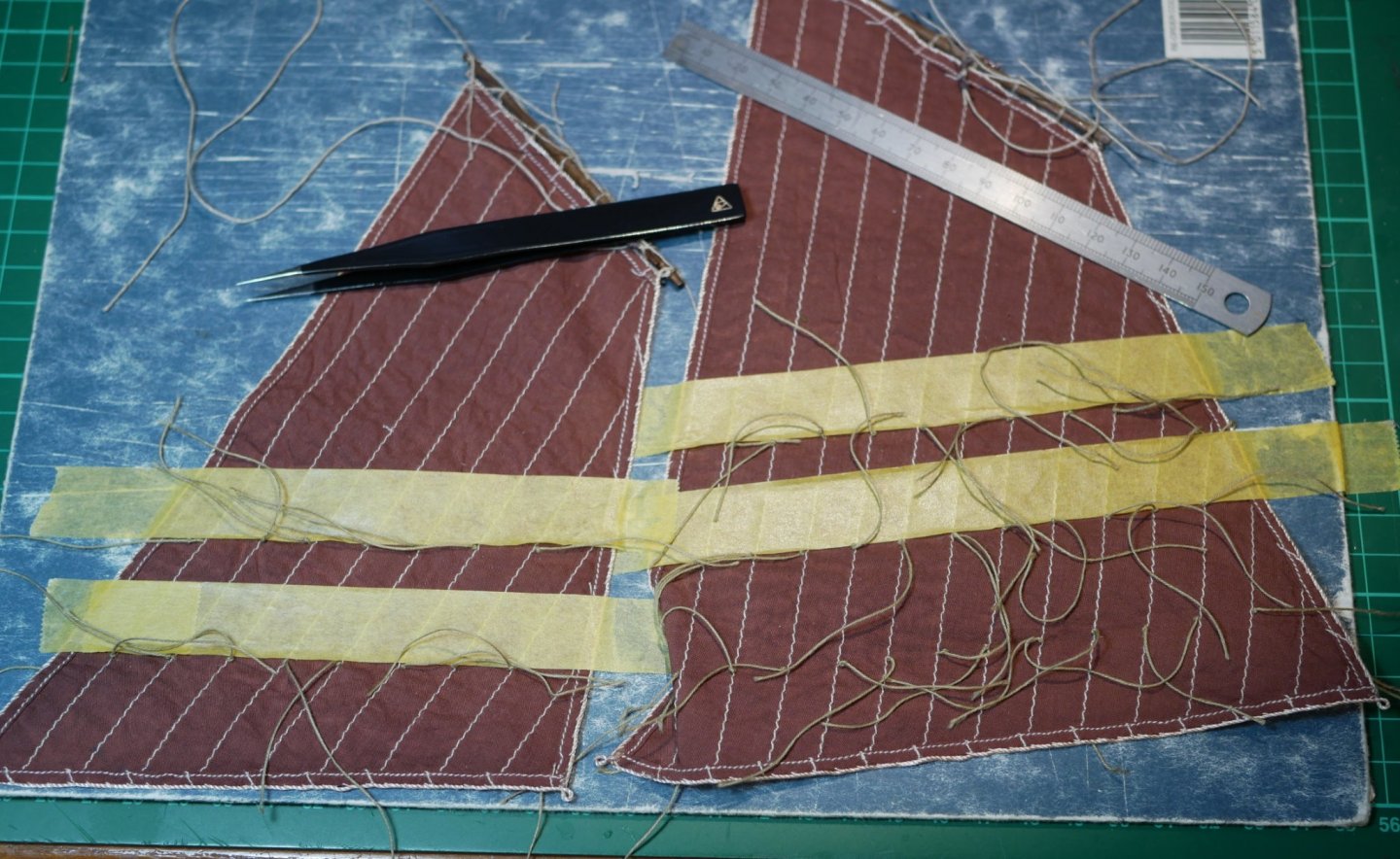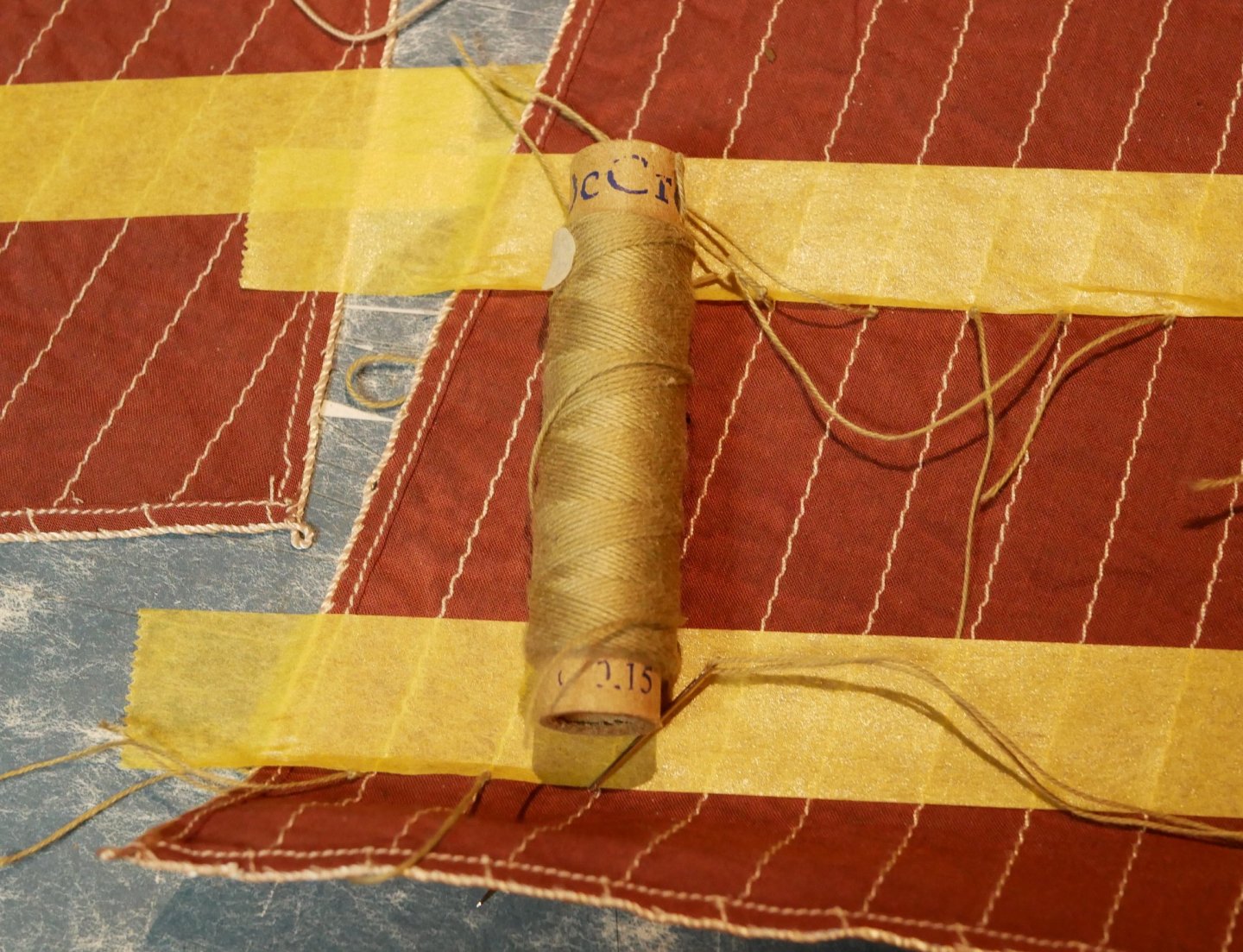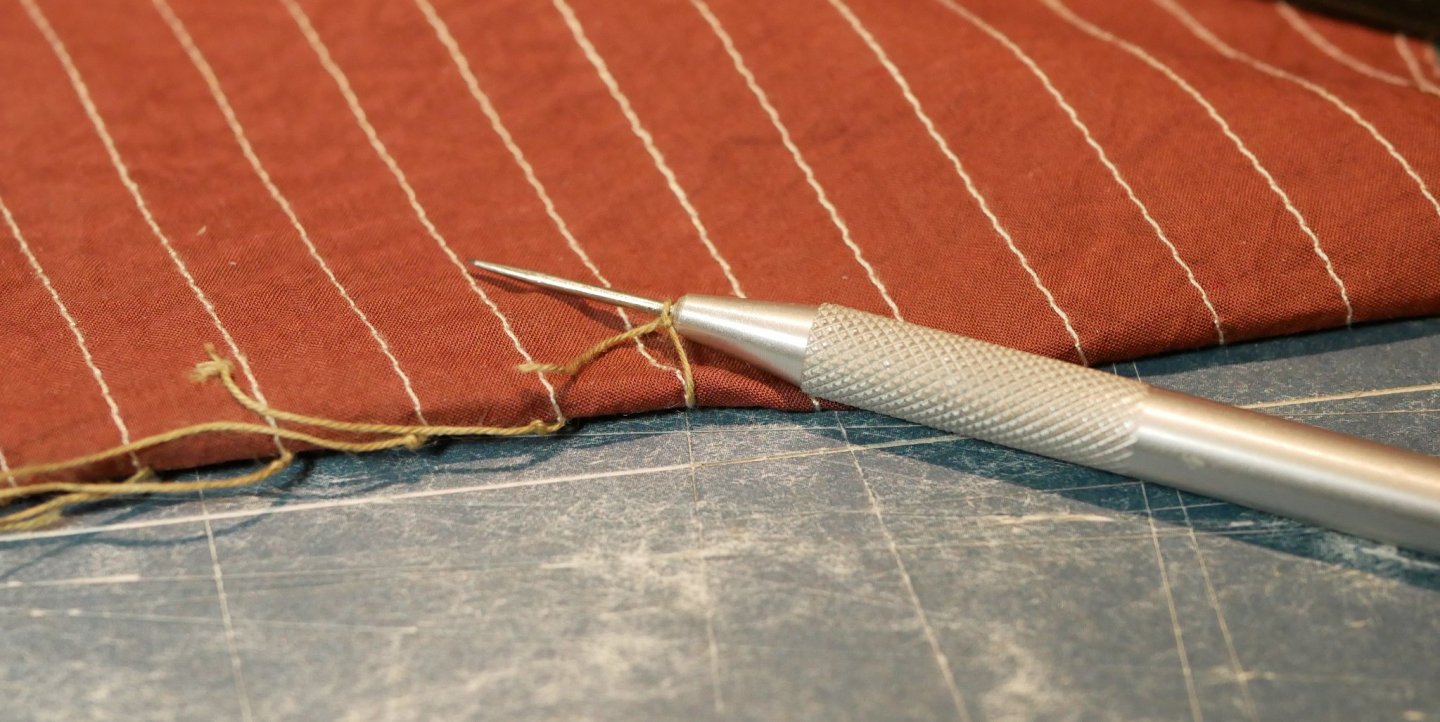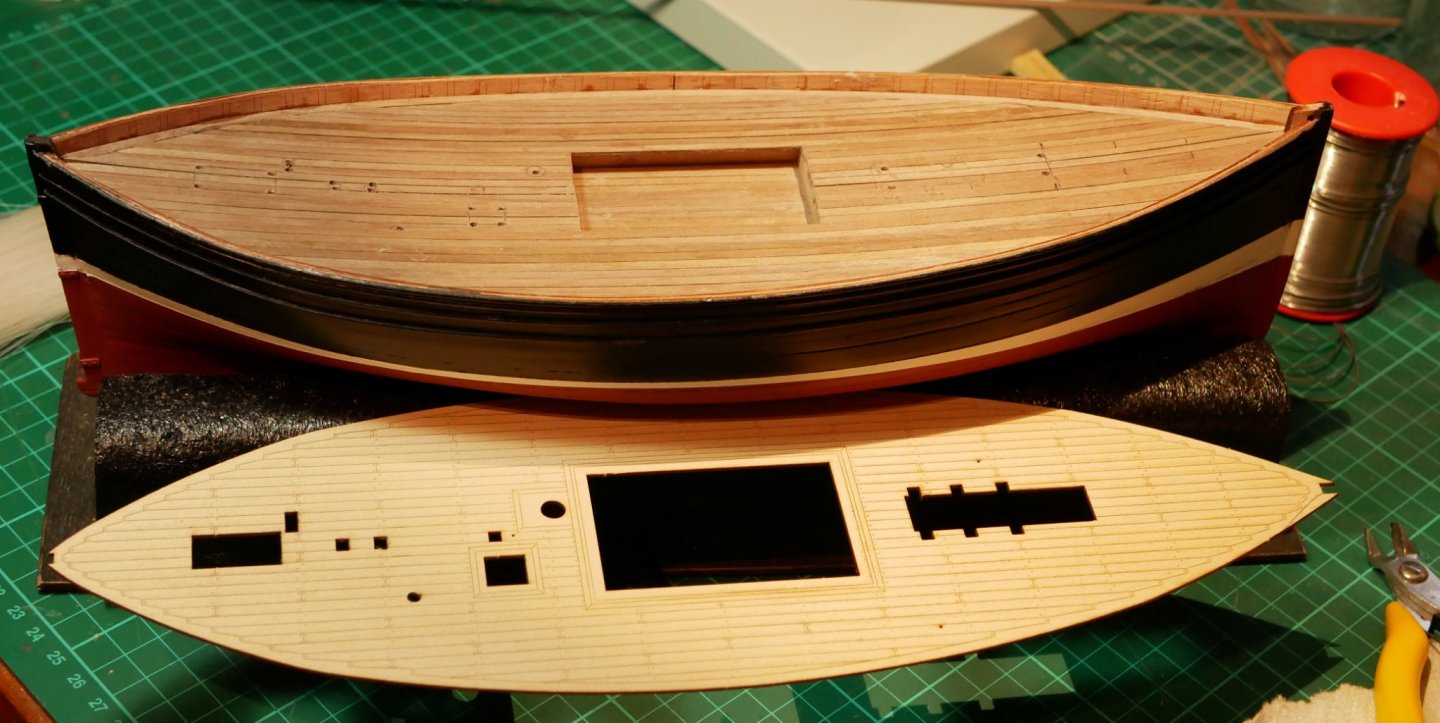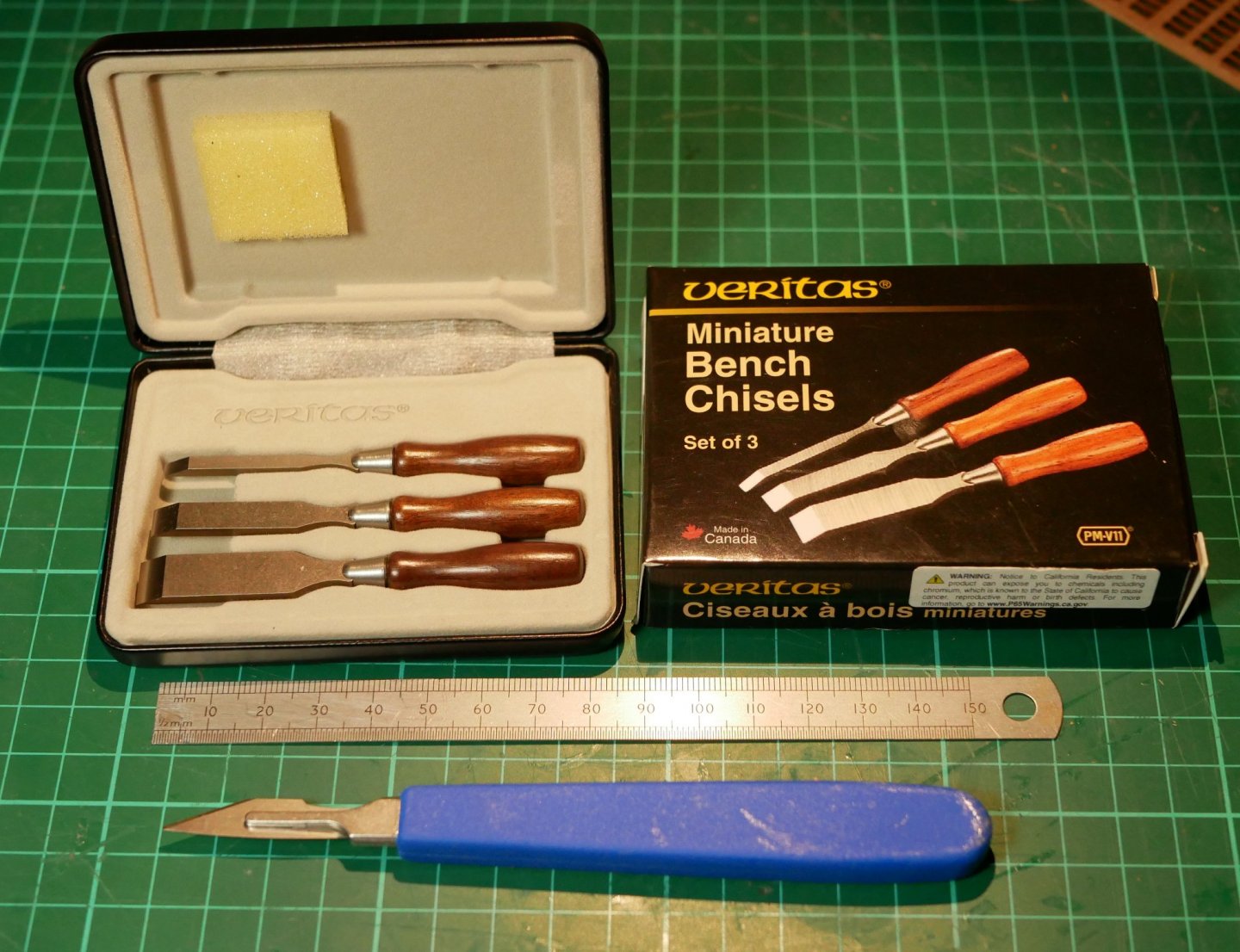-
Posts
864 -
Joined
-
Last visited
Content Type
Profiles
Forums
Gallery
Events
Everything posted by Rik Thistle
-
Hi Spyglass, Thanks for the info. My first planking layer will be 1.5mm x 5 mm limewood, so that thickness gives me plenty scope for sanding the planks to the same level as the bulwarks. I used PVA glue. I did pin the bottom edges, but would ideally like to aim for a solution where pins mostly aren't necessary. And that sure is a lot of rubber bands ;-) But maybe that's what I need to plan for before gluing. As I gain more experience I should be better able to look at a part to be glued and know what clamping is required beforehand to get the desired result. I did realise afterwards that a rod pushed though facing gunports would give me a couple of sturdy attachment points for rubber bands to hook on to and therefore put loads (in the necessary directions) onto the glued part. So it is a case of me building up a database in my head of 'best practice' clamping methods. Thanks again, Richard
-
Hi all, HMS Flirt continues her construction, in spite of some minor distractions. Below, The lower decks have been glued in position and weighed down overnight. Everything seemed to fit fine. Bow patterns etc glued in to position, and now preparing to fit the Deck Beams. Upper deck longitudinal supports, Stern Frame Parrerns etc all glued. One of the Bow Patterns had slipped down a few mm during clamping but I don't think it will affect any later fittings. And Main Sub Deck ready for fitting. The Main Sub Deck, although accurately made, does take a fair bit of manoeuvring to get it to slot into all the bulkheads etc. As the instructions say, curving the deck longitudinally helps squeeze it into position. Even after I was convinced the deck was snugly in position I twice went round each bulkhead slot location pressing firmly down on the deck and on the secound round heard a couple of clicks as the deck found an even snugger fit....to the naked eye all had looked fine but there was obviously the odd 0.5mm here and there to still be taken up. And just to make sure the deck didn't try to free itself the heavy squad was called in for overnight duty. The (slightly curved) Stern Counter was soaked in hot water and clamped to a chisel handle for an hour or so. I really need to sit down and figure out better clamping methods - appropriate clamping is a subject that keeps raising it's head with me. 4x tie wraps isn't ideal but did the job. Bulldog clips clamping the stern Board. About to check the beveling of the parts that the planks etc will run over. Correct beveling is still an area of 'great mystery' to me. The plank showed good contact in all the places it should up and down the depth of the bulkheads, but the Bulwarks...ah, that's a different story. Bulwarks soaked in hot water and then clamped (rubber bands) overnight to achieve the desired curvature before gluing. It's fairly easy to get the curvature correct in one plane, but as the bulwark approaches the bow there are at least two directions of curvature. I still haven't figured out how to clamp in two planes. Bulwarks now glued in position. There are some small gaps between the bulwarks' lower edges and the bulkheads, near the bow and to some extent near the stern. The gaps are maybe approaching 1mm (worst case) - I've driven in some nails to push the bulwarks towards the bulkheads but I still see some 0.25mm - 0.5mm gaps. Probably nothing I can't fudge a solution to, but the gaps are the result of less than perfect beveling and not being aware of appropriate clamping methods....two areas I need to brush up on. OK, well the planking is next 🙂 My study, which not so long ago was a radio shack/electronics learning area has now been usurped by a shipyard. And boy, do shipyard tools, materials etc quickly spread to all corners of the room in a matter of hours. Fortunately, I have workshop training so at close of play the last thing done is a full tidy up. I'm not a fan of the 'clean desk' policy that some companies force on their employees but am in full agreement with tidying up the workshop at the end of the day....it pays dividends. All for now, Richard PS: There is a door to be fitted below decks...it was...but fell out... I need to figure a way to glue it back in position before planking commences... that is tomorrow's first challenge.
-

non-ship review 1:24 Istanbul diorama - OcCre
Rik Thistle replied to James H's topic in Non-ship kit reviews
James, I've just received the Istanbul Diorama and the associated Tram from Cornwall Models. I was swithering between this package, Stephenson's Rocket and a Stagecoach but your reviews swung it for me. They will go in the queue until I finish HMS Flirt, which is my 3rd ship in a row....I feel that I need a temporary change from ships. Having said that, I am very much enjoying HMS Flirt. It's good that you review these 'left field' products - they should present some new challenges for me and a chance to expand on my 'modelling' knowledge. I think one day (in the far, distant future), I'd like to scratch build but will very slowly work up to that. Regards, Richard -
Chris, I think clear drawings makes life so much easier for the customer. But maybe as a compromise you could use a single drawn line on the plan to represent a rope, but give the detail on the rope's end-fixings on a separate A4 sheet (or two) that includes all types of fixings (knots, seizing etc) used on that ship...each different type of fixing on the A4 sheet would have a unique number, and then the appropriate unique number would be indicated on the plan sheet at the end(s) of each rope. That would save you having to draw each fixing multiple times on numerous plan sheets. Kinda like a simplified version of welding symbols ... https://www.samsfabrications.co.uk/useful-tools/welding-symbols/ You could even keep a library of A4 fixing sheets on your website. Plus maybe some tips on seizing, knots etc. Just a thought, Richard
-
I've got the lower shrouds on now, but some life stuff is getting in the way and reducing my building time dramatically. I'll keep pecking away at it. Hi dkuehn, Your build is looking very good. I've just started a Flirt build and one of the reasons I bought it was to get more experience with ropes and rigging and ratlines which, when I look at the likes of the Victory builds on here, I just can't understand how folks have the patience and skill to manage all those ropes etc. Anyway, please keep the pics coming...they are great for picking up tips....and just good to look at. All the best, Richard
-
Hi all, After finishing VM's Lady Eleanor Fifie the other day I wanted some downtime. But by the next day the Flirt box had somehow found it's way into the shipyard, opened itself and started assembling parts...strange! Truthfully, I just couldn't stop myself. I haven't even read through the manual once or even looked at the plans. So that needs to be rectified over the next few days before further building continues (he says). I have read through the excellent Flirt builds on MSW and will take notes from them to supplement VM's instructions. Having built VM's Lady Eleanor I'm now a bit more familiar with the excellent layout style of the manual, the plans and how they relate to each other. I don't expect the Flirt instructions to be any different. Having experience of a company's way of conveying instructions shortens the learning curve. So here's a couple of pics to get started.... Below - manual, box cover and cradle. I think I actually prefer the wooden cradle to the plastic version. It's stronger and more rigid - I might try to paint/varnish the wooden version when all is done and use it as Flirt's permanent display cradle - we'll see. And some parts have already been dry fitted together.... The build should gather momentum once I've spent time reading the instructions and cribbing from MSW Flirt builds. And that's all for now, catch you soon, Richard
-
Thanks Ryland. I'm busy reading up on Flirt on the internet (not much there) but also reading through others' builds on MSW (a lot there). So once I have a bit more understanding of the Flirt build, and have had a little downtime, I'll commence my 'winter project'. All the best, Richard
- 49 replies
-
- Lady Eleanor
- Vanguard Models
-
(and 1 more)
Tagged with:
-
James, B.E., Thanks for the advice on the 'yard cleats' and that they are not used on this model. I'll keep them for a rainy day. Richard
- 49 replies
-
- Lady Eleanor
- Vanguard Models
-
(and 1 more)
Tagged with:
-
Thanks VTHokiEE. I think the main inspiration for my small changes comes from Blue Ensign's extensive work on these type of vessels. I'm keenly watching where he takes his Zulu Muirneag 🙂 Richard
- 49 replies
-
- Lady Eleanor
- Vanguard Models
-
(and 1 more)
Tagged with:
-
B.E, Wonderful details. And I do agree that the stem plate looks much better unpainted...I think it's how the practically minded builders/fishermen would have installed it and maintained it. Yes, fishermen (and their families) worldwide can have a very hard life. I guess it was not easy to find other, safer employment ouside the areas they lived in. The same would apply to miners. Regards, Richard
- 261 replies
-
- muirneag
- vanguard models
-
(and 2 more)
Tagged with:
-
Hi all, Lady Eleanor is leaving the shipyard on her way to the fishing grounds around the coasts of Scotland and England. It's been an enjoyable build - the shipwrights working on it are a good bunch, and although they made a few mistakes I won't be docking any wages since I need them for the next build. Below, L.E. saying 'thanks' to her build guide. Close up of the deck. I've neatly coiled the ropes which is probably wrong for a working trawler...I guess they were more gathered together in a fashion that prevented tangling. I also added my own decking. Chris' laser engraved deck is absolutely fine, but I just like laying decks. I added a lifebouy and a rope around the steering mechanism. Another pic of the deck. I used full deck length strips of wood and then 'scored' them to represent planking - some of the scores look a bit brutal this close up but are OK from a distance. Hatch - I used a razor saw to remove some of the hatch cover planks and stow them at the side. I aslo added a 'weathered' net (lace curtain material). The Capstan looks like it has rotated a bit. It's not glued in so I must have nudged it. I may added a rope to the capstan later and attach it to the net once I find out the correct routing etc for the rope. Yup, that capstan has definitely moved! Finally, a big thank you to Chris and Vanguard Models for the work put in to producing The Lady Eleanor. It took me about 7 weeks, most days doing something, even if it only for 15 mins just to keep up the momentum. I've just noticed the name plates are missing...somebody's wages are definitely getting docked now! As luck would have it, a few weeks ago I ordered some black plastic chain for the steering mechanism...it arrived yesterday! And a question...Pear Sheet 2 has 14x pairs of little 'triangles' that I never used...what were they for? OK, well next in line is HMS Flirt (MSE). That's a bigger undertaking for me and will certainly get me through the winter...I wonder though if I shoud try something different first eg stagecoach, Stevenson's Rocket, Pagoda etc?...pondering Oh, and a big thank you to all the other Fifie/Zulu builds on this website and the always helpful comments and advice. This website is a great place to be. All for now, Richard
- 49 replies
-
- Lady Eleanor
- Vanguard Models
-
(and 1 more)
Tagged with:
-
I had a wander round Micro-mark the other day and there are definately loads of things to buy, but I can't justify enough of them at the moment. But I did do a test checkout cart at $80 and the total was $120 ie +50% shipping, which is a bit too much. But thanks anyway Erik for thinking of new ways to spend my money 😉 ....not that I need too much encouragement. All the best, Richard
- 222 replies
-
- First Build
- Lady Isabella
-
(and 2 more)
Tagged with:
-
Erik, Your hull and planking is looking very good. I feel that the Zulu is moving up my wishlist pretty fast 😉 I'm also still admiring your Foam Cradle...I did have a look for it in the UK but it doesn't seem to be sold on this side of the pond...shame. However, I've got my own Mk1 cobbled together version that I've used on my first two ships and it's been fine but maybe a bit harsh on paintwork. I've got a large chunk of foam in the attic that will soon be morphing into a Foam Cradle methinks. Regards, Richard
- 222 replies
-
- First Build
- Lady Isabella
-
(and 2 more)
Tagged with:
-
Thanks B.E. I think the reef points are a vital part of the functionality of the boat. So I really couldn't leave them out. And your build gave me all the guidance I needed. Yes, those fishermen had a very hard life. Very few become remotely wealthy on it...it was a case of just surviving at sea, and on land. I have seen lifebouys pictured/filmed on a number of Fifies/Zulus ... eg ...but they do look like very modern additions, and no doubt to comply with H&S. Back in the day, I can imagine crews attaching bladders to themselves ...even then the cold waters would would be very dangerous. Thanks for that insight. Before I started Lady Eleanor I knew little about the Scottish and UK fishing industries. But having trawled the internet for info and bought Inshore Craft by Greenhill & Mannering, I feel I have a better understanding of it all. Still much more to learn though. And that is an interesting 'side effect' of building models...the building is enjoyable and skills are developed, but my interest is also piqued by what made these things tick. In fact I'm beginning to appreciate what amazing 'machines' boats and ships are and the businesses/politics behind them. It's good stuff. Regards, Richard
- 49 replies
-
- Lady Eleanor
- Vanguard Models
-
(and 1 more)
Tagged with:
-

Preformed sizing for dead eye installation
Rik Thistle replied to Runnymede's topic in Modeling tools and Workshop Equipment
I've not yet mastered the proper seizing method...ie pull the end of the thread back in to the thread bundle using the thread loop created. Instead, I tie the seizing thread around where the rigging loop (different loop) starts...to tie, you can do a reef knot (or a half reef knot, adding a touch of PVA to hold it in place)...then wrap the longer thread strand around the two strands of the rigging loop + the other end of the shorter thread (ie three items just like in proper seizing) and then after 6 or 7 wraps of the longer thread take the shorter thread strand that was being tied and make a reef knot with the longer strand at the far end of the wrap. That's maybe not the world's best explanation, but I hope it makes some sense. From a distance it's difficult to tell it's not proper seizing. One day I will master proper seizing. I tend to use a 3rd hand device to dangle the three lengths from whilst doing the wrapping. Regards, Richard -
Hi all, I've been working on the sails and some deck fittings. Sails first... First, tying the yards to the sails using simple reef knots. Also added were the yard sail lift ropes. The reef point positions were then marked out using Tamiya masking tape. Dimensions calculated from the excellent Fifie/Zulu builds on this website, not least B.E.'s ..... ....and online photographs. Reef points being threaded into position...a bit of a tangle at the moment. I used Occre 0.15mm thread. And the knots on the back of the sails were 'walked' right up to the cloth using a sharp, pointed object. Reef points now fitted and cut to length. I used B.E.'s advice to add a dab of glue just at the knot to get the thread to lie flat and downwards. There's a little bit of glue staining obvious but I picked most of it off and it's not that noticable from a distance. Masts installed (not glued since they are a reasonably tight fit) and ready to accept the sails Sails tentatively positioned. Lots of rigging still to do. View from the stern. I added a lifebouy. I can't imagine the fishermen, hardy as they were, going to sea without some kind of flotation device. Online searches showed white, red & white and blue & white lifebouys in use last century. Most were held in a metal rod cradle against a cabin wall or tied onto the deck. The Reaper Zulu does have a white lifebouy fitted to it's Foremast crutch, so I copied that. IIRC, I also saw a B&W pic of a Fifie with a lifebouy on the crutch. I should really attach a few coils of rope to the lifebouy. Also, I added a rope to the rudder steering mechanism. And I'd like to add a thick rope to the Capstan and have it attached to a sail or sails but am unsure whereabouts that attachment point would be - anyone have any thoughts? Well, that's it for today, See you all soon, Richard
- 49 replies
-
- Lady Eleanor
- Vanguard Models
-
(and 1 more)
Tagged with:
-
Erik, I do like the look of your hull cradle. I made a DIY version when I started ship modelling in the summer....I find it very flexible for man handling the ships. But I suspect your's is a bit more gentle on the paintwork etc. I'm going to see if I can hunt your one down in the UK. And I really like your Zulu build. I'm thinking it will end up on my wishlist. I'm building Vanguard Model's Fifie and thoroughly enjoying it. However, B.E.'s Muirneag Zulu version highlights what is possible if one puts in a lot of research combined with experience and skill..... one day maybe ;-) Best regards, Richard
- 222 replies
-
- First Build
- Lady Isabella
-
(and 2 more)
Tagged with:
-
Don, "... CA will remain liquid for a couple of hours outside the bottle ..." I have been wondering for a while about how long I could leave a blob of CA lying on a piece of paper and it remain useful before I dipped a thin applicator stick into the blob? From what I understand about CA (and it's not that much) doesn't CA set in the presence of water molecules ie in the wood, on the plastic, in the air? Maybe a blob of CA forms a protective shell (reaction with the air's water molecules) around the blob keeping the CA inside the blob active for a lengthy period? Or even though the CA is still liquid after a couple of hours has it lost some of it's adhesive capability as water molecules merge with it? Regards, Richard
-

Fifie steam capstan - for hauling nets, sails or both?
Rik Thistle replied to Rik Thistle's topic in Nautical/Naval History
Thanks BE. After watching the above video I ended up watching 3 or 4 more YT videos containing old footage of trawlers (mostly around 1920s-1940s) and listening to old fishermen talk about the life on board....fascinating stuff. It would have been great if there were colour footage of the earlier Fifies but colour cinematography only started to become a thing in the 1920s onwards and widespread from the 1940s. All the best, Richard -
I'm curious as to what the purpose of the steam capstan on a Fifie drift net fishing boat is. As the title says, was the capstan used for hauling up the sail (or sails?) and/or pulling in the nets? I watched Jim Duthie and Andrew Strachan being interviewd on - 'life on ZULU and FIFIE herring drifters' ( https://www.youtube.com/watch?v=6xitrXHT4LU) Jim and Andrew have good, strong regional accents and use auld Scots language. Some of the comments I picked up are... 5.50 mins - "steam capstan for hauling the sail" 9.12 - life in sail boats versus steam drifters 9.45 - hauling nets - differences between sail boats and drifters ...net over stern? 10.55 Sail boat has coal stove, and a boiler for the steam capstan to howse (?) the mast and the fish. The impression I got was that the steam capstan was initailly introduced to assist with lifting the large sails, and then later also used to haul in the nets. But I could be completely wrong. Anyone have any thoughts? Thanks, Richard
-
Thanks James. Some bits of the build have gone together quite quickly, whereas other bits require more patience and planning. Just like life, I guess. 😉 I've got Chris' HMS Flirt waiting patiently in it's box downstairs. That will be a much bigger undertaking for me and will likely take me quite a few months to complete. I have also been toying with the idea of doing a non-ship build next, just as a change from ships...say something like Stephenson's Rocket or a Stagecoach (I do like a good Western) ...but I think it would be rude to keep Flirt waiting too long. We'll see. All for now, Richard
- 49 replies
-
- Lady Eleanor
- Vanguard Models
-
(and 1 more)
Tagged with:
-
Hi all, Deck has now been planked with full length planks. Also using Chris' deck as a template to mark where the deck openings are. My plan is to use a scalpel to mark the planks to represent shorter lengths. Below - Timberheads and bulkhead rails glued and drying overnight. I'm using a Humbrol Acrylic matt (25) blue for highlighting deck features. With 20:20 hindsignt, and regarding painting in blue, I should have only laid the very outer curved deck planks which would have allowed me to paint the inside surface of the bulkhead rails and timberheads blue. I'll know next time...but I'm learning there is an optimum build sequence for things such as painting. Below, I decided to paint the brass parts sheet black. I think it will give the Fifie a more industrial look. After spending an age trying to score the deck planks with a scalpel to represent shorter planks I decided to invest in some small chisels. They are incredibly tiny but perfect for scoring the planks, and shaving of excess wood where I don't want it...and no doubt many other things. They seem very well made. Fitting the cleats, which I painted gold to represent brass. I also masked off the large deck holes since I didn't want any cleats disappearing in to the bowels of the hull never to return. All the deck fittings have now been installed and both masts tapered and trial fitted. I have removed some of the fish/net hatch planks and plan to stuff an already made lace curtain 'fish net' in there to represent a drift net. But I think I should have made the opening in the hatch on the side where the steam capstan is...darn. OK, well that's it for this week. It's been fun so far and I'm happy with the way little Fifie is turning out. See you all soon 😉 Regards, Richard
- 49 replies
-
- Lady Eleanor
- Vanguard Models
-
(and 1 more)
Tagged with:
-

Beginner Suggested Ship Model and Brand
Rik Thistle replied to ChilliBeanz's topic in New member Introductions
Welcome Mark. A 'simple' row boat such as Ryland suggested could be a great starting project. It will get you used to working with the materials and gently introduce you to the tools, glues, paints etc needed. Also it won't take 12 months to complete and won't cost a fortune. And you still will get a tremendous amount of enjoyment out of it. If you are wanting a bit more then Vanguard Models Lady Eleanor fishing vessel is a great kit that fits together perfectly. I don't know what country you are based in but most of the stores and/or kit manufacturers seem to have little issue delivering in-country or abroad. All the best, Richard
About us
Modelshipworld - Advancing Ship Modeling through Research
SSL Secured
Your security is important for us so this Website is SSL-Secured
NRG Mailing Address
Nautical Research Guild
237 South Lincoln Street
Westmont IL, 60559-1917
Model Ship World ® and the MSW logo are Registered Trademarks, and belong to the Nautical Research Guild (United States Patent and Trademark Office: No. 6,929,264 & No. 6,929,274, registered Dec. 20, 2022)
Helpful Links
About the NRG
If you enjoy building ship models that are historically accurate as well as beautiful, then The Nautical Research Guild (NRG) is just right for you.
The Guild is a non-profit educational organization whose mission is to “Advance Ship Modeling Through Research”. We provide support to our members in their efforts to raise the quality of their model ships.
The Nautical Research Guild has published our world-renowned quarterly magazine, The Nautical Research Journal, since 1955. The pages of the Journal are full of articles by accomplished ship modelers who show you how they create those exquisite details on their models, and by maritime historians who show you the correct details to build. The Journal is available in both print and digital editions. Go to the NRG web site (www.thenrg.org) to download a complimentary digital copy of the Journal. The NRG also publishes plan sets, books and compilations of back issues of the Journal and the former Ships in Scale and Model Ship Builder magazines.

